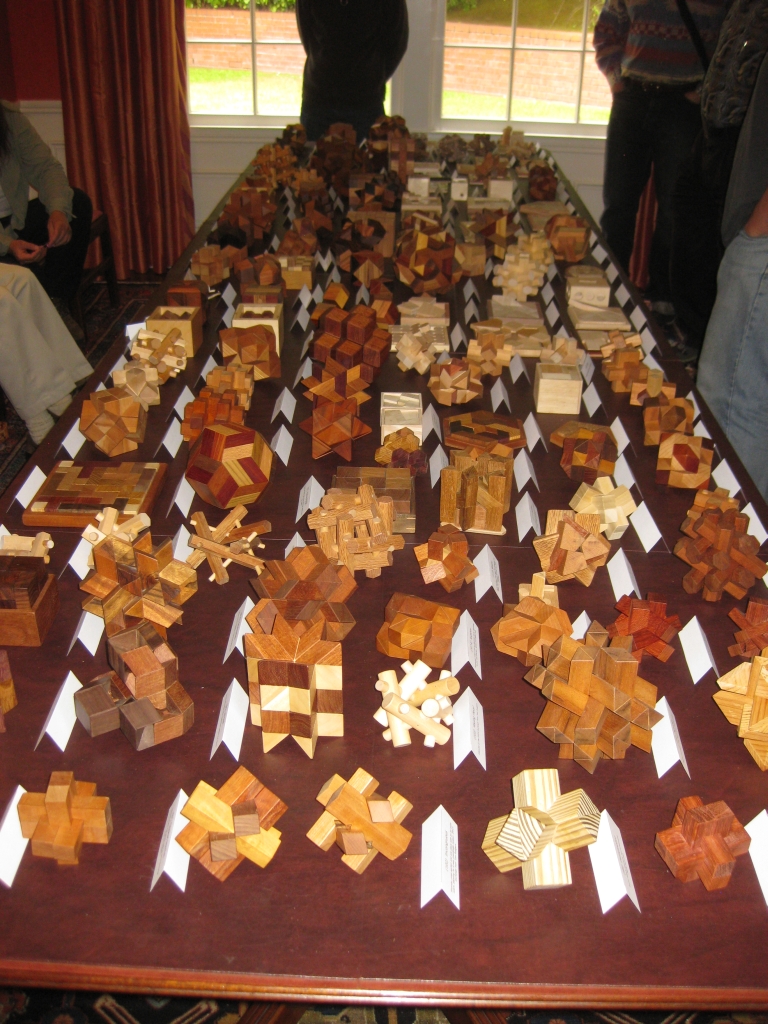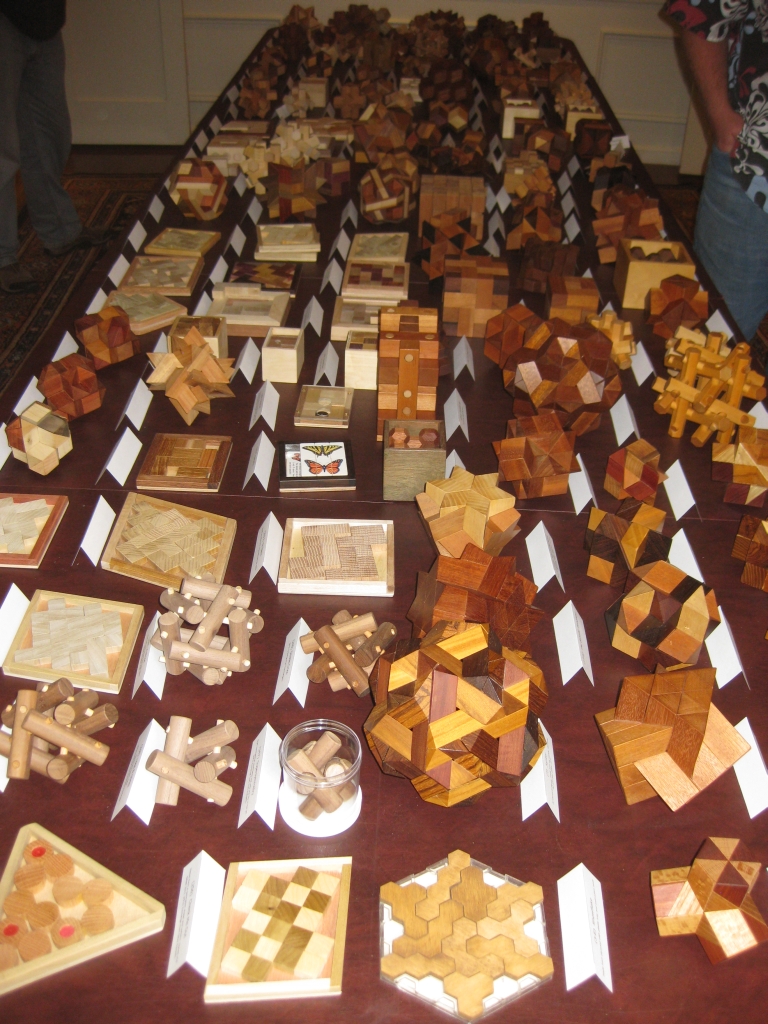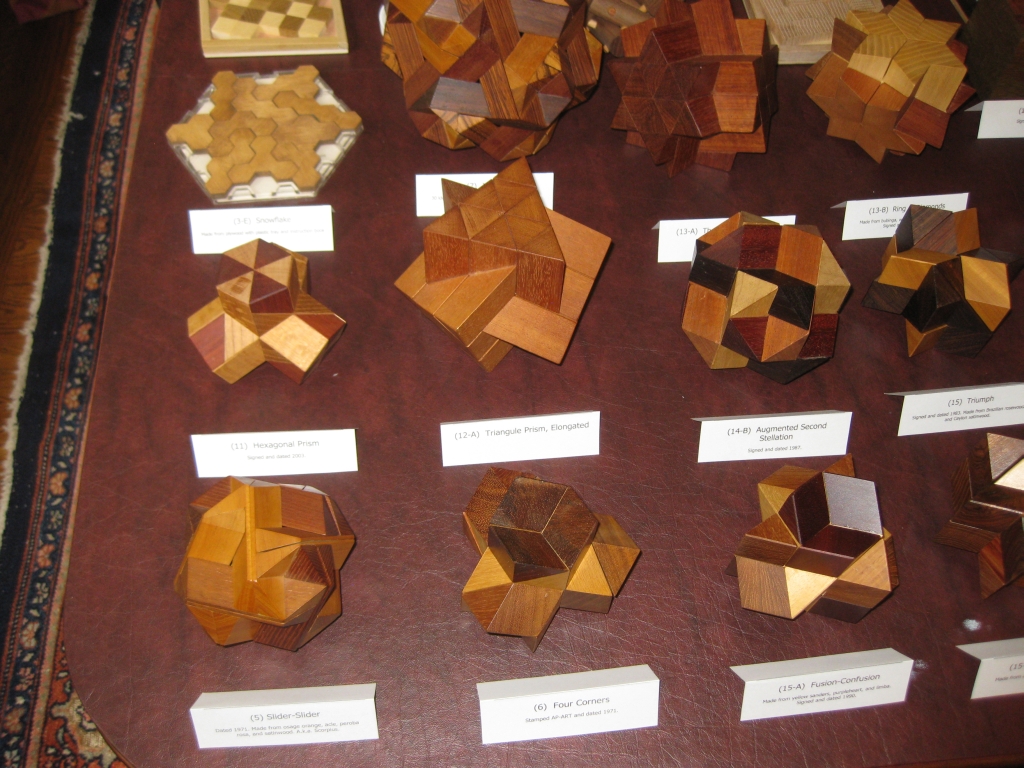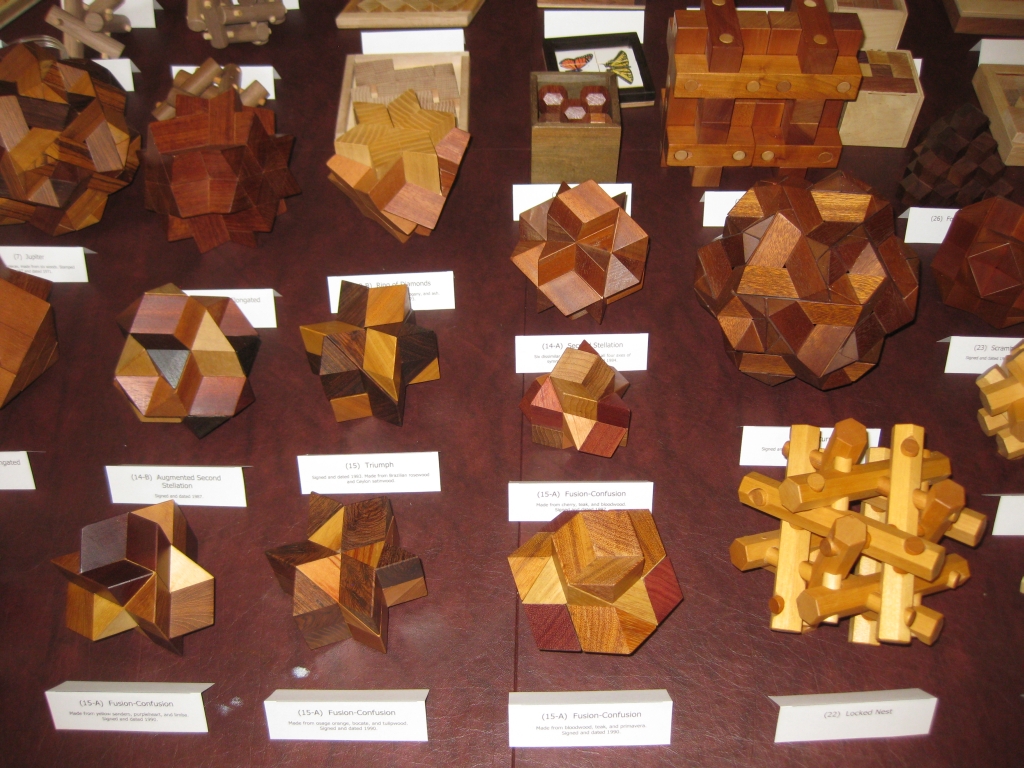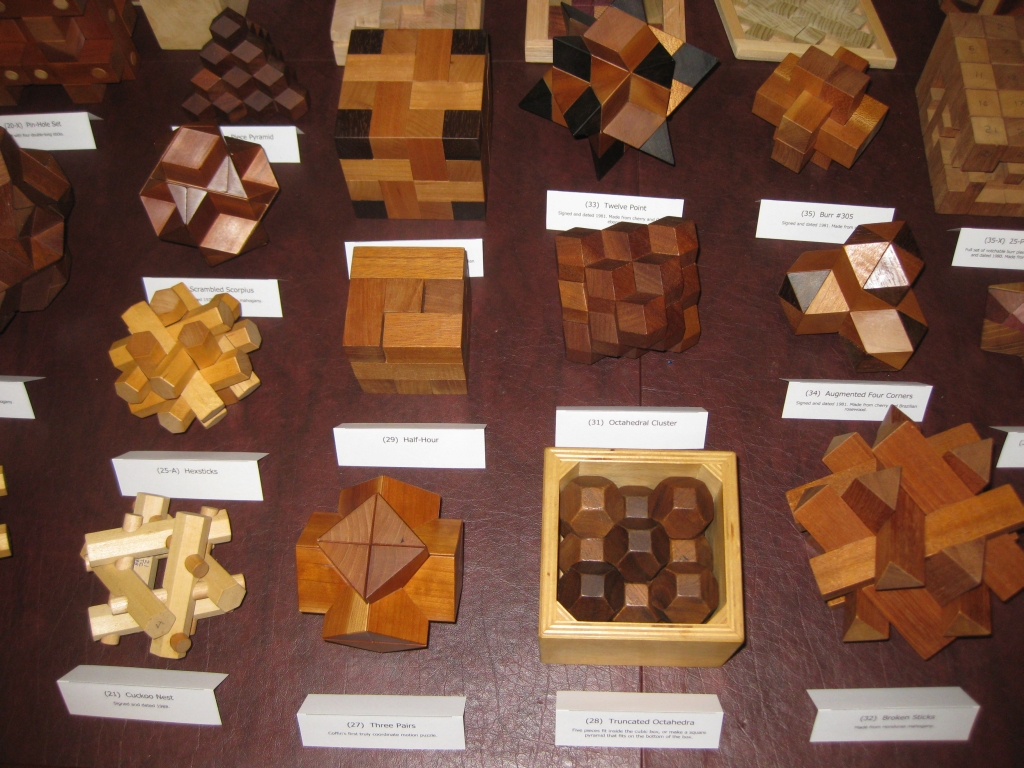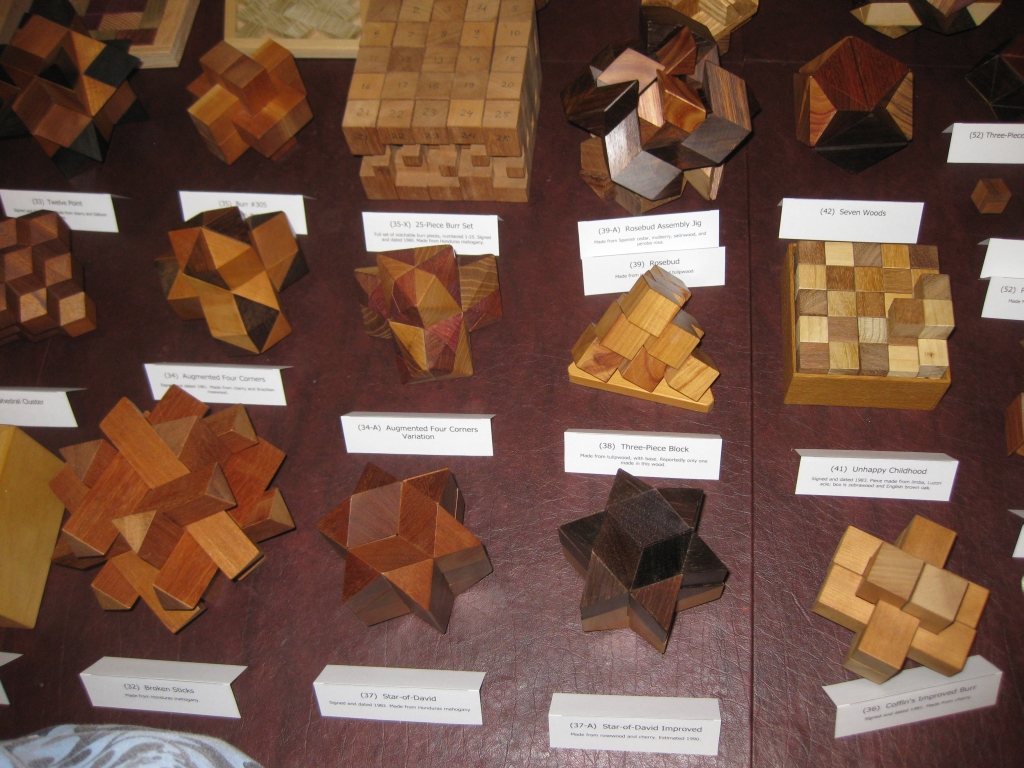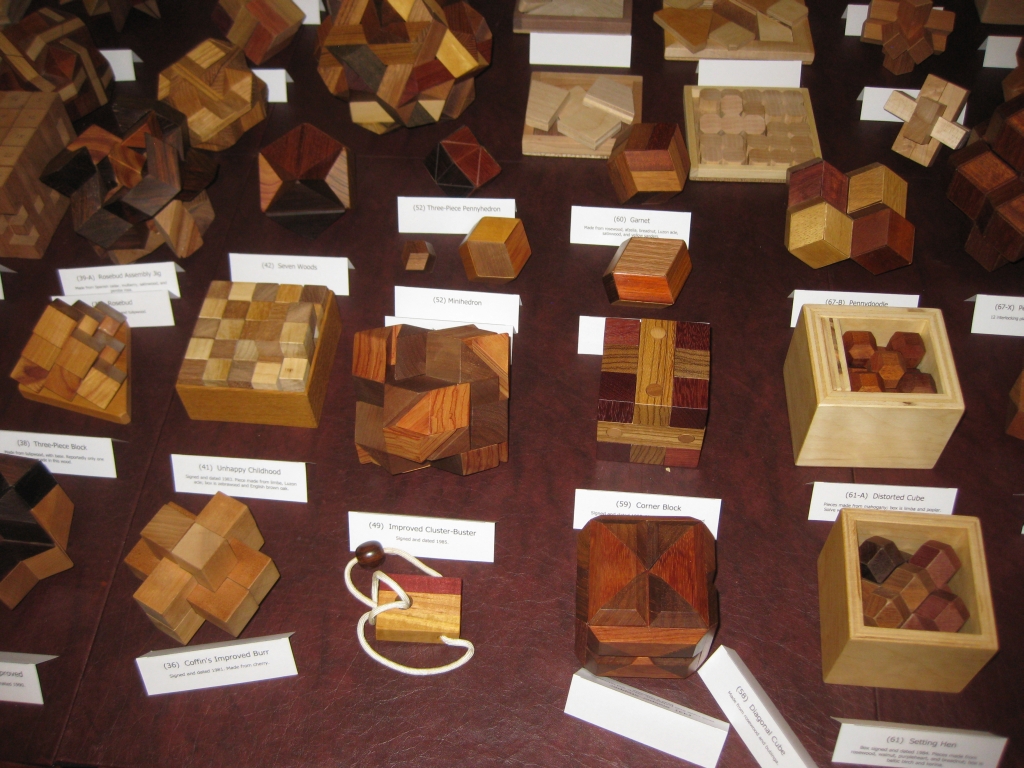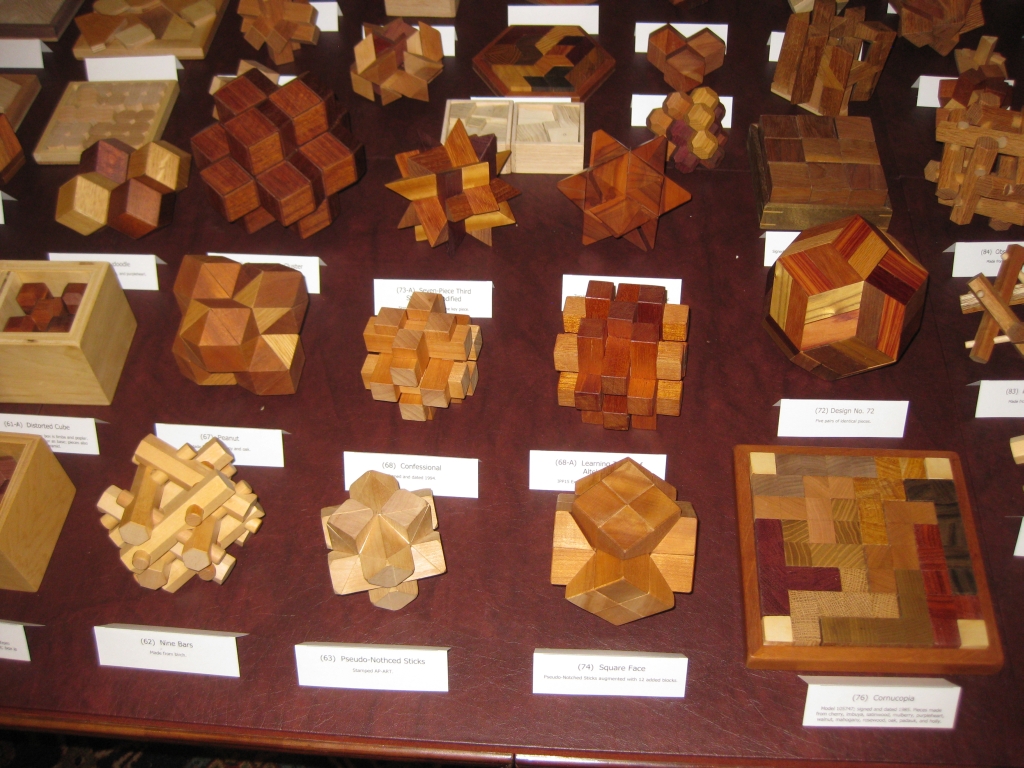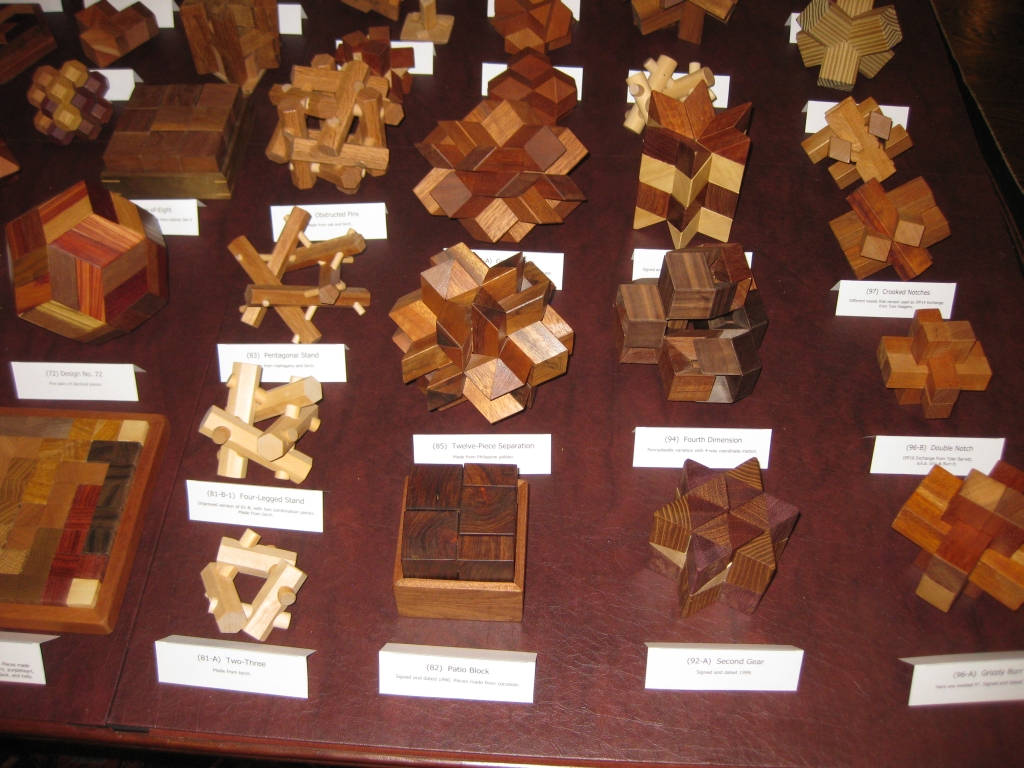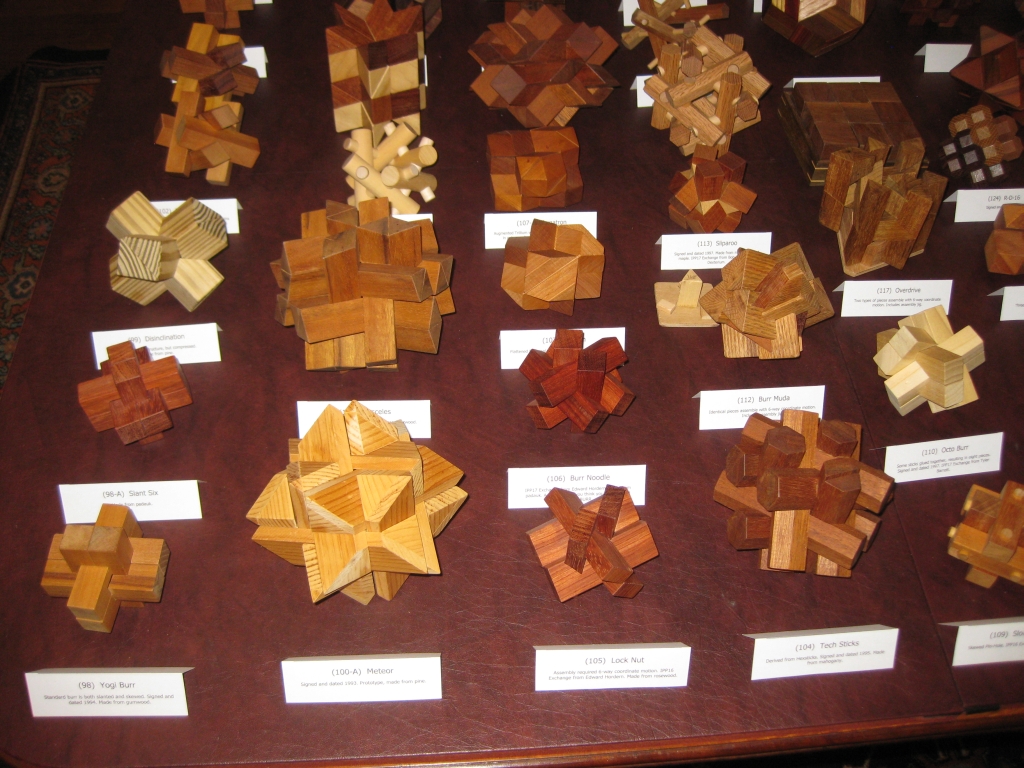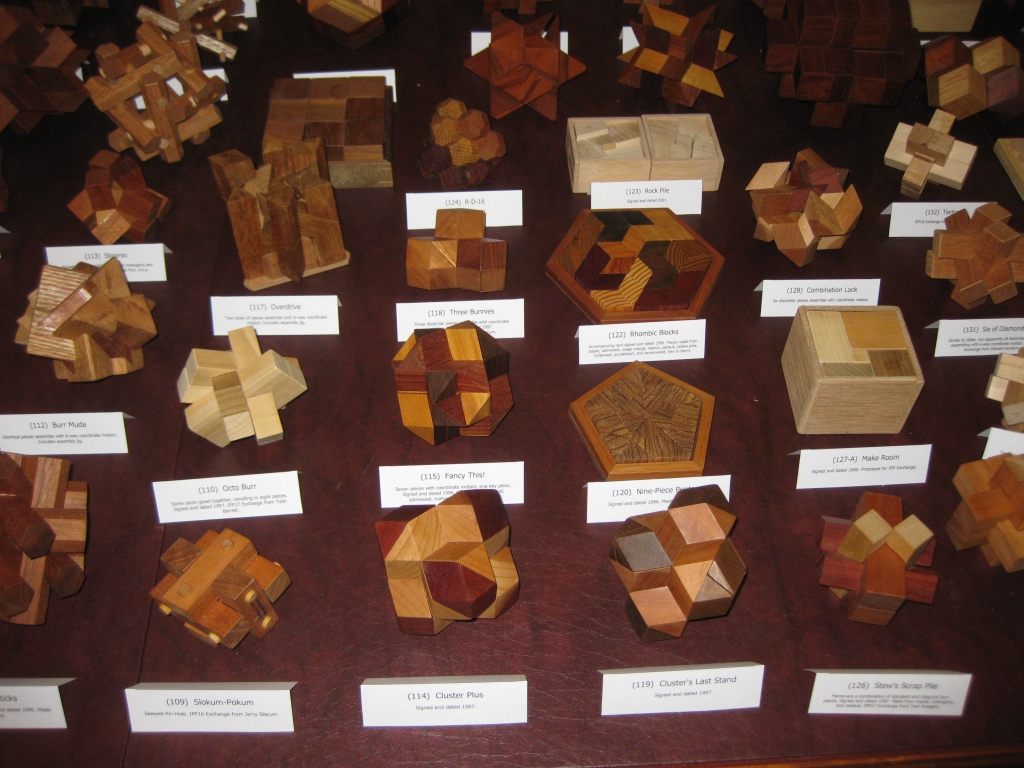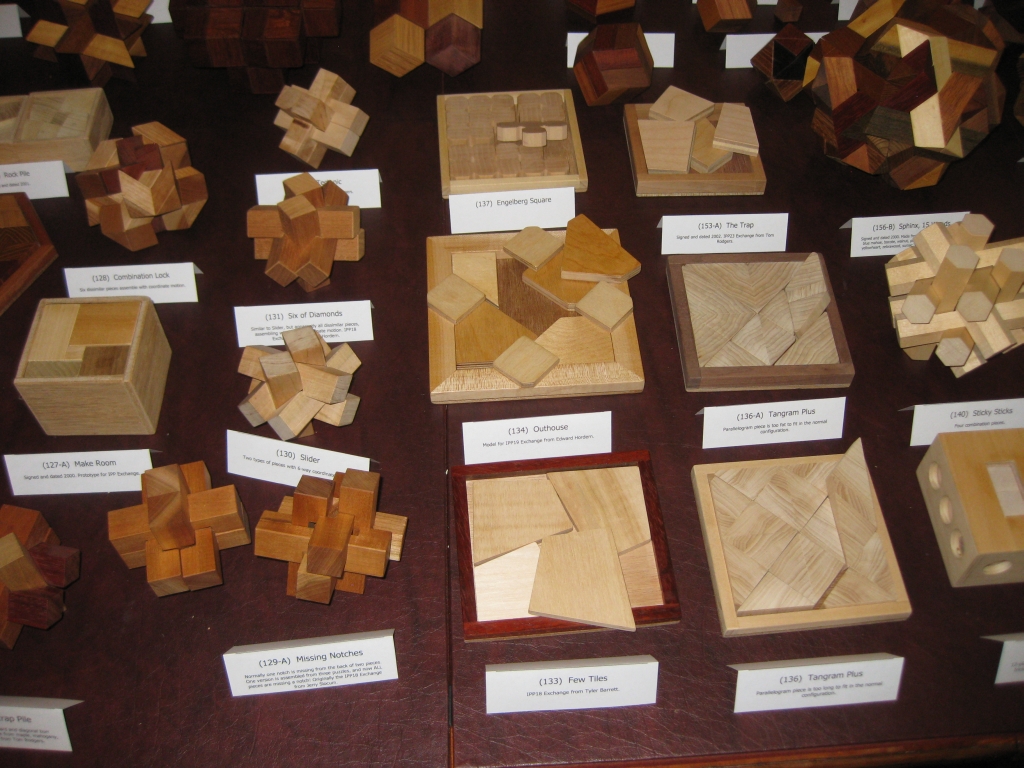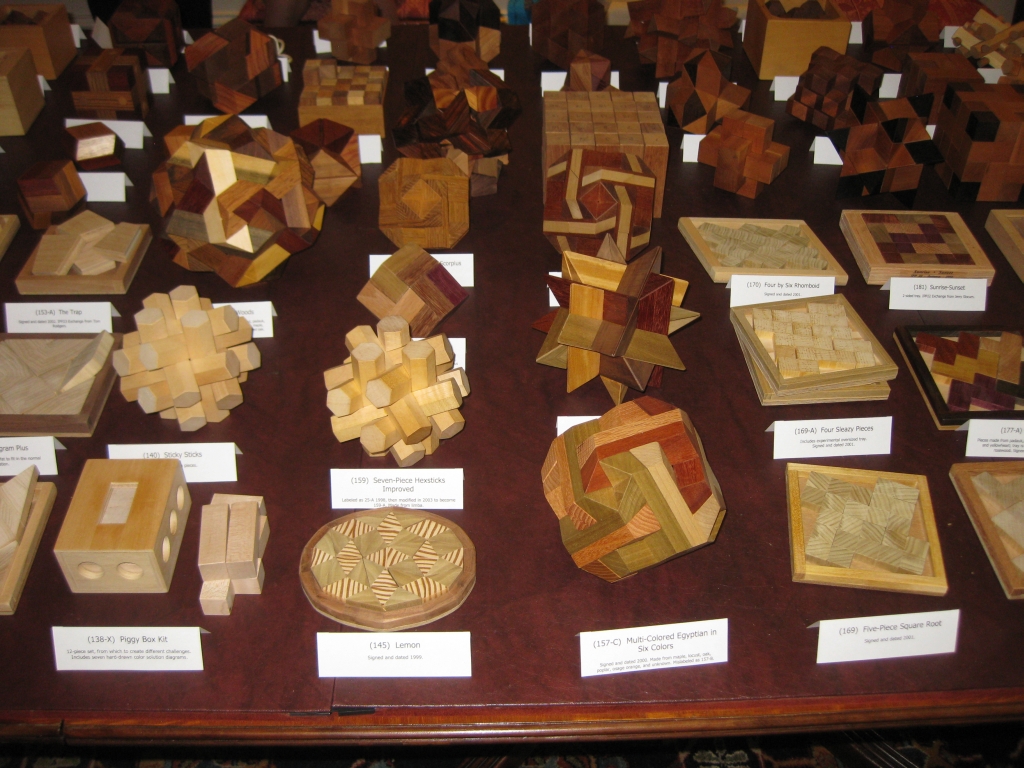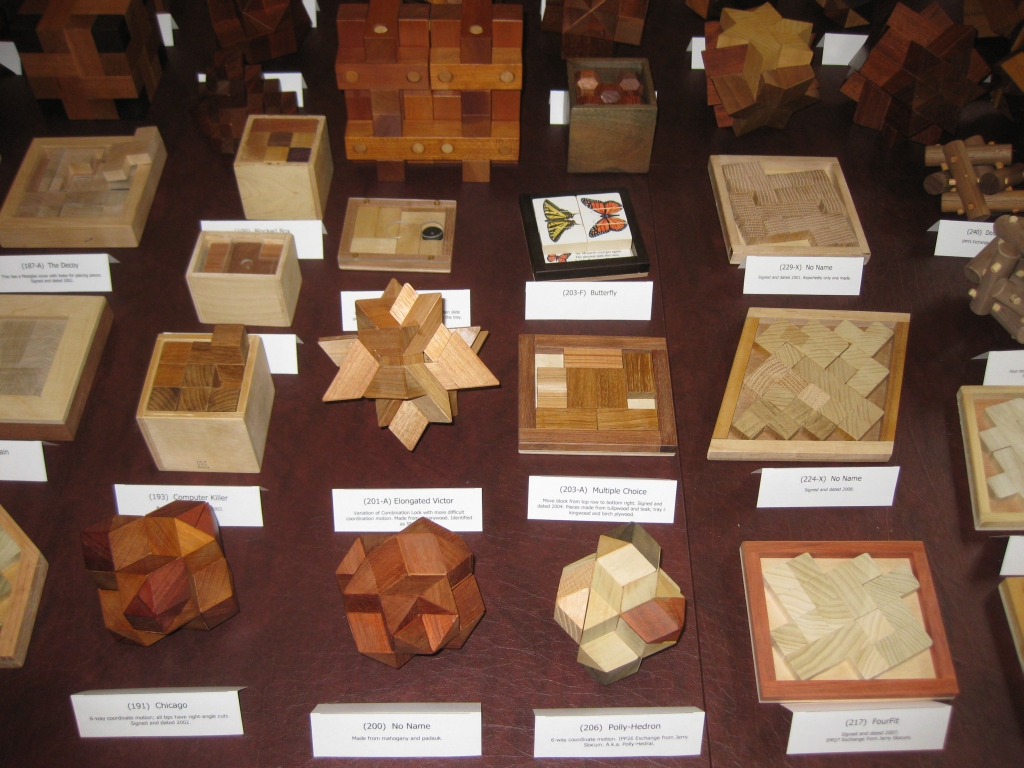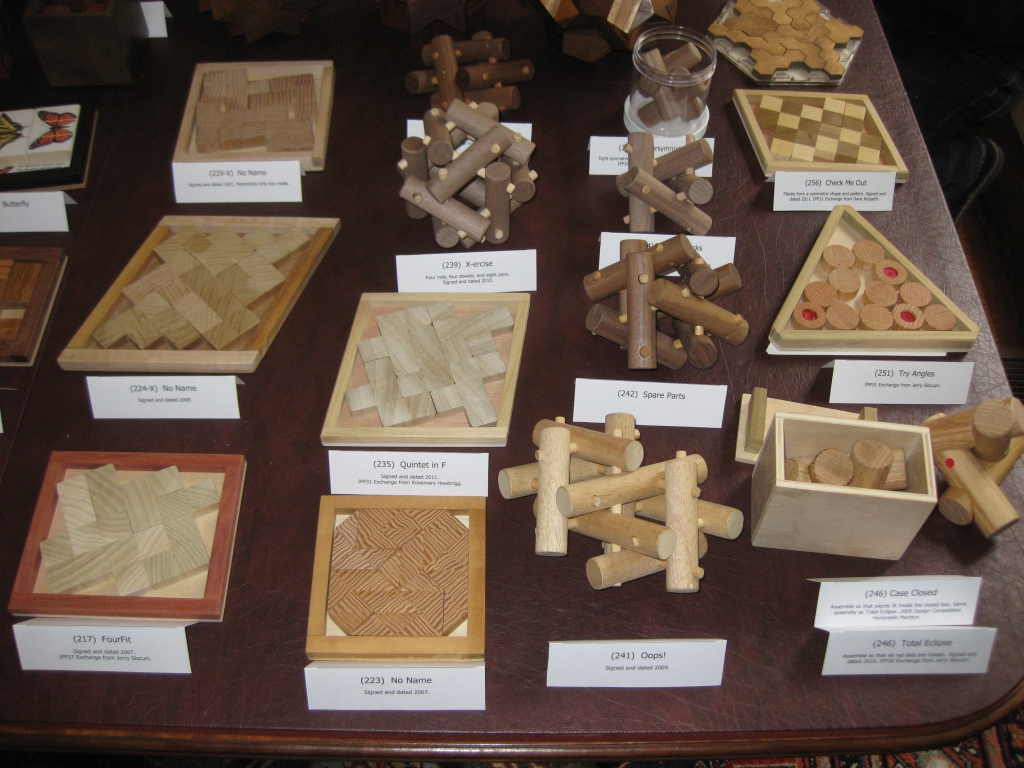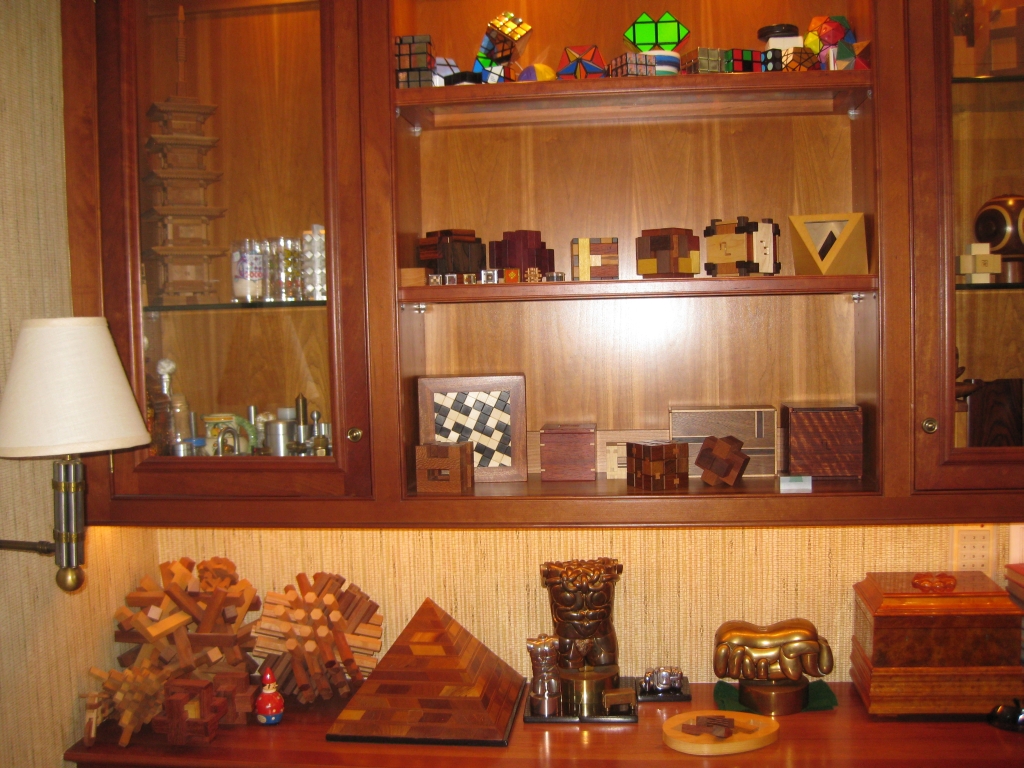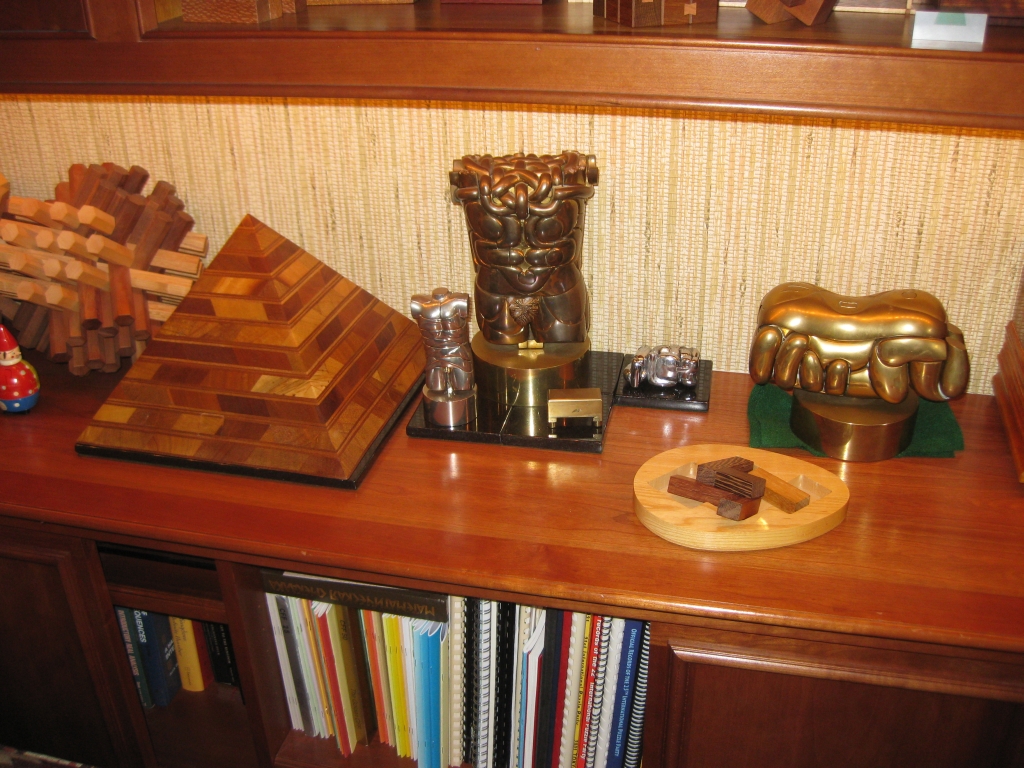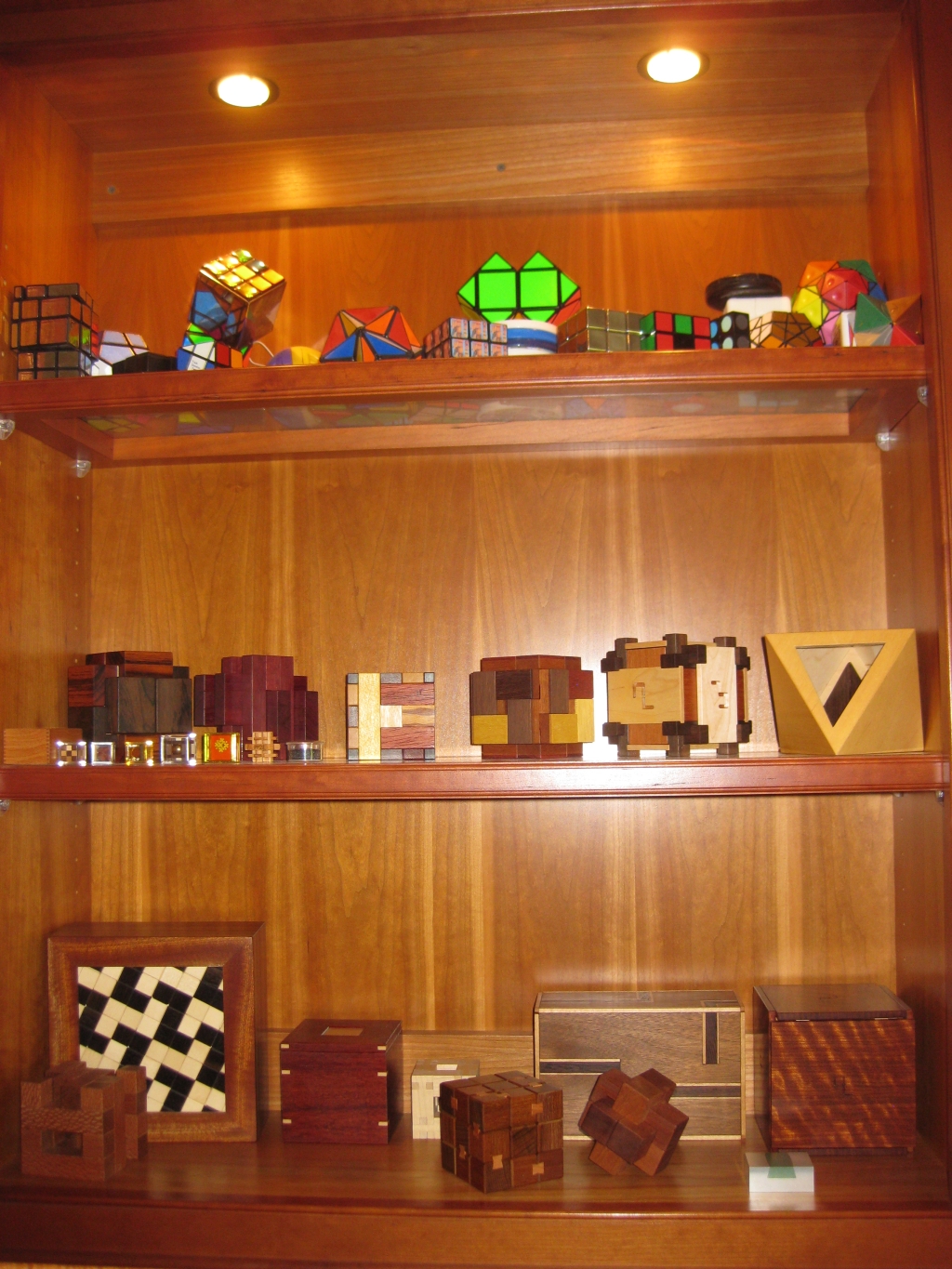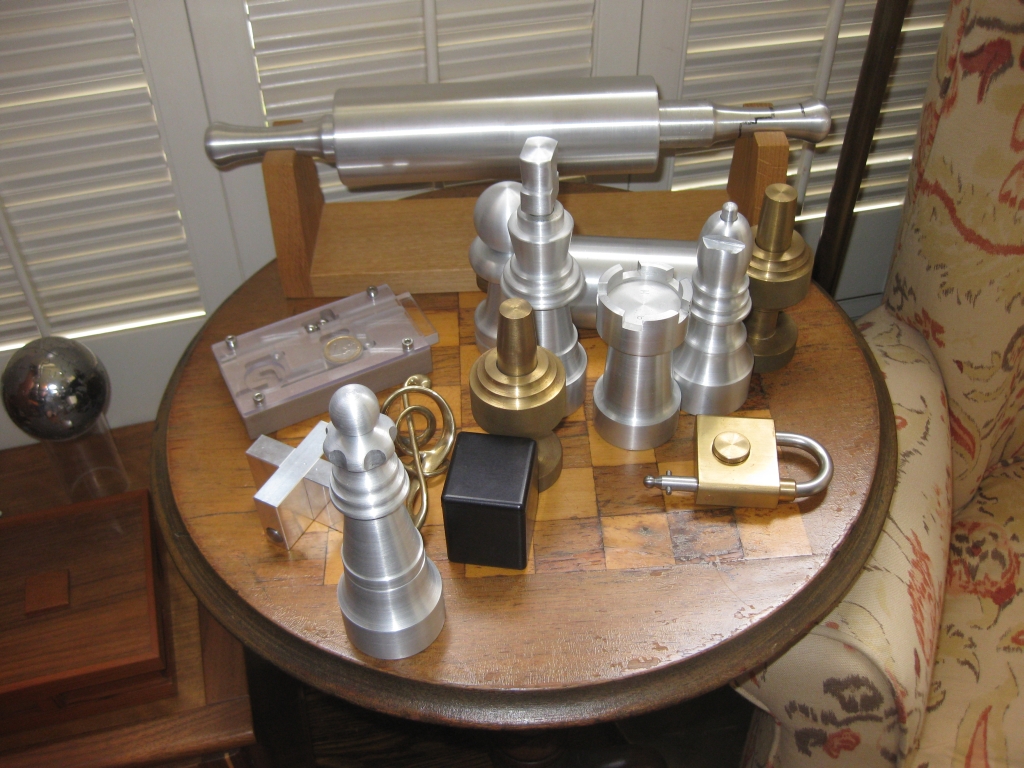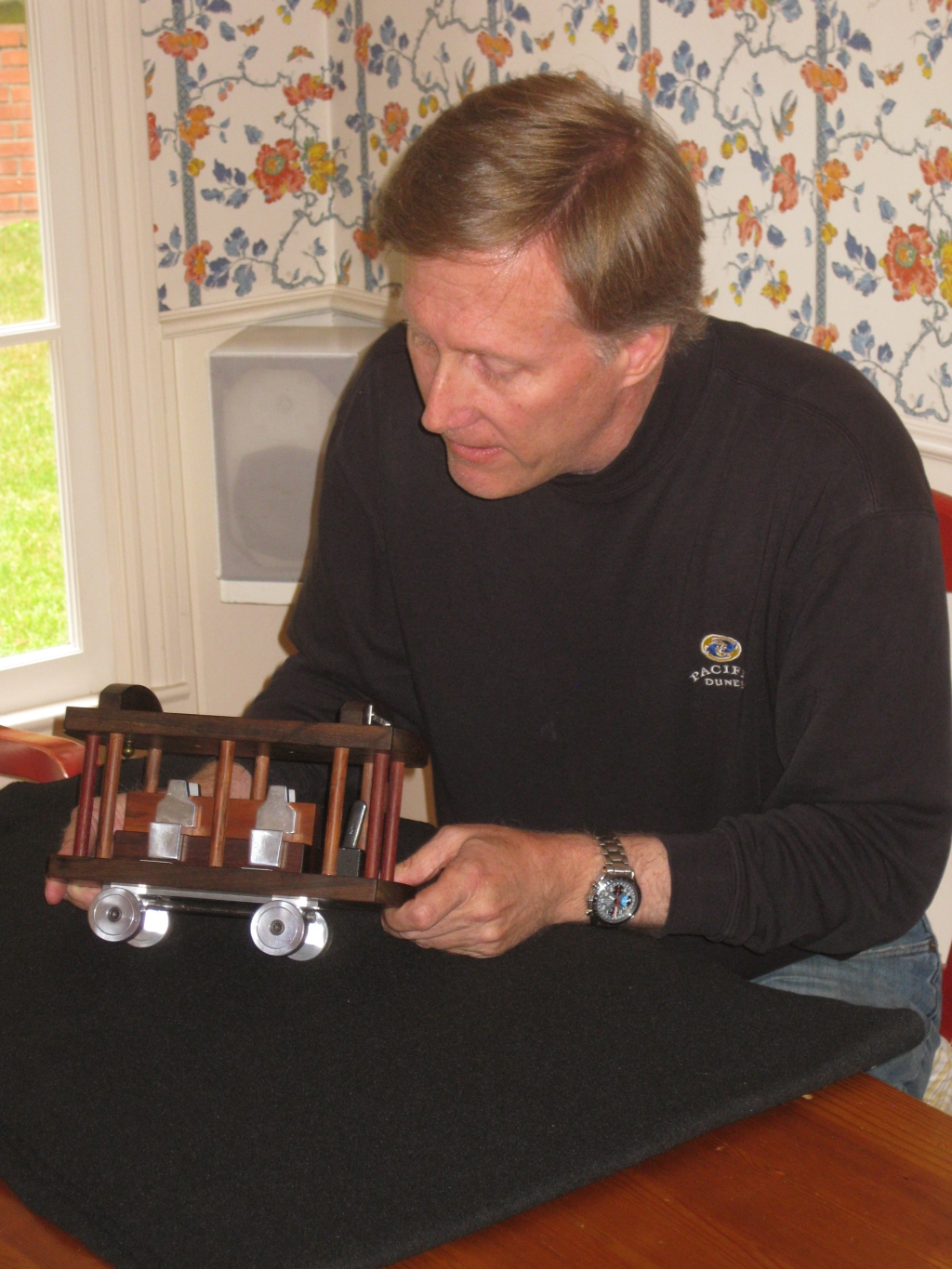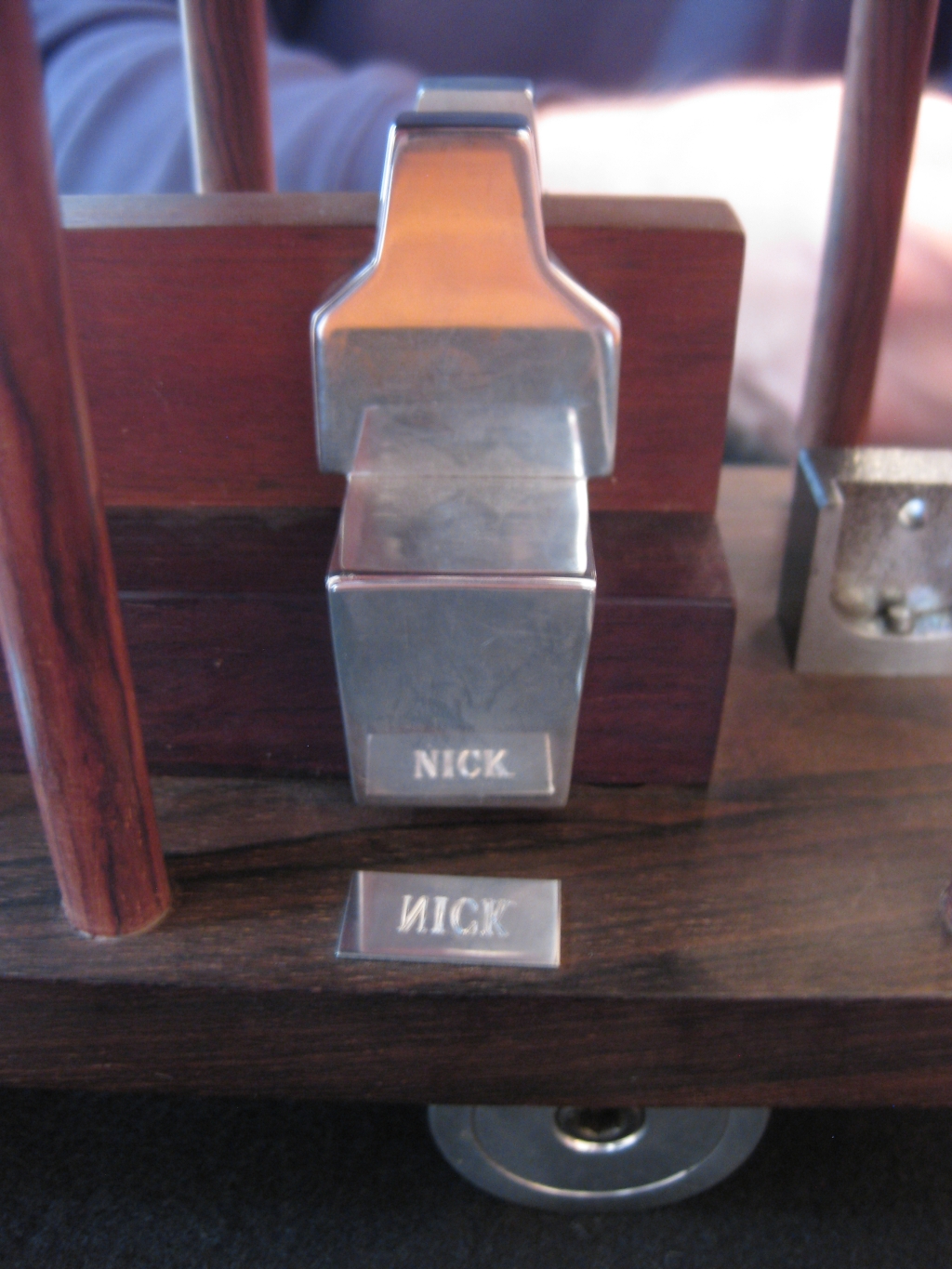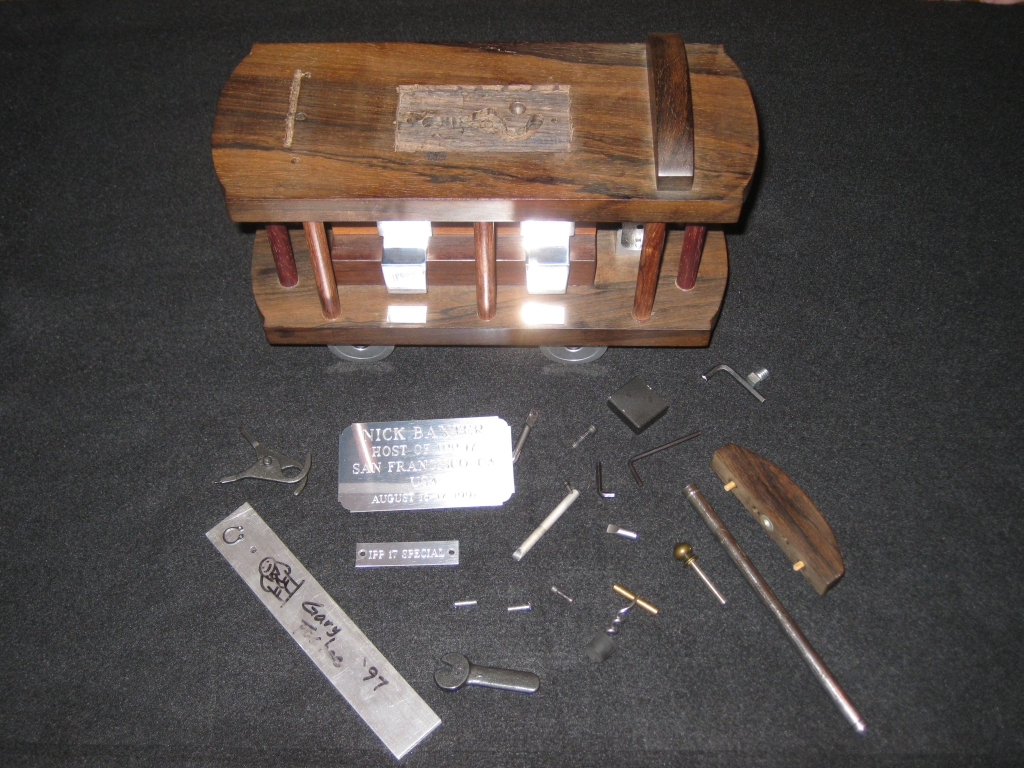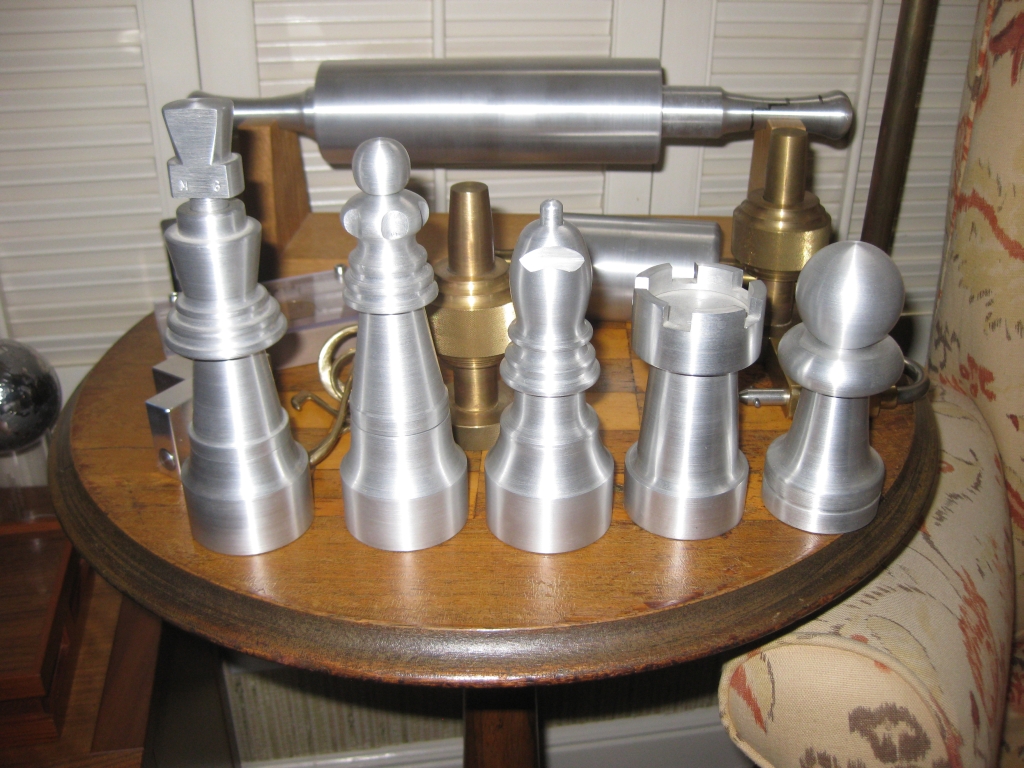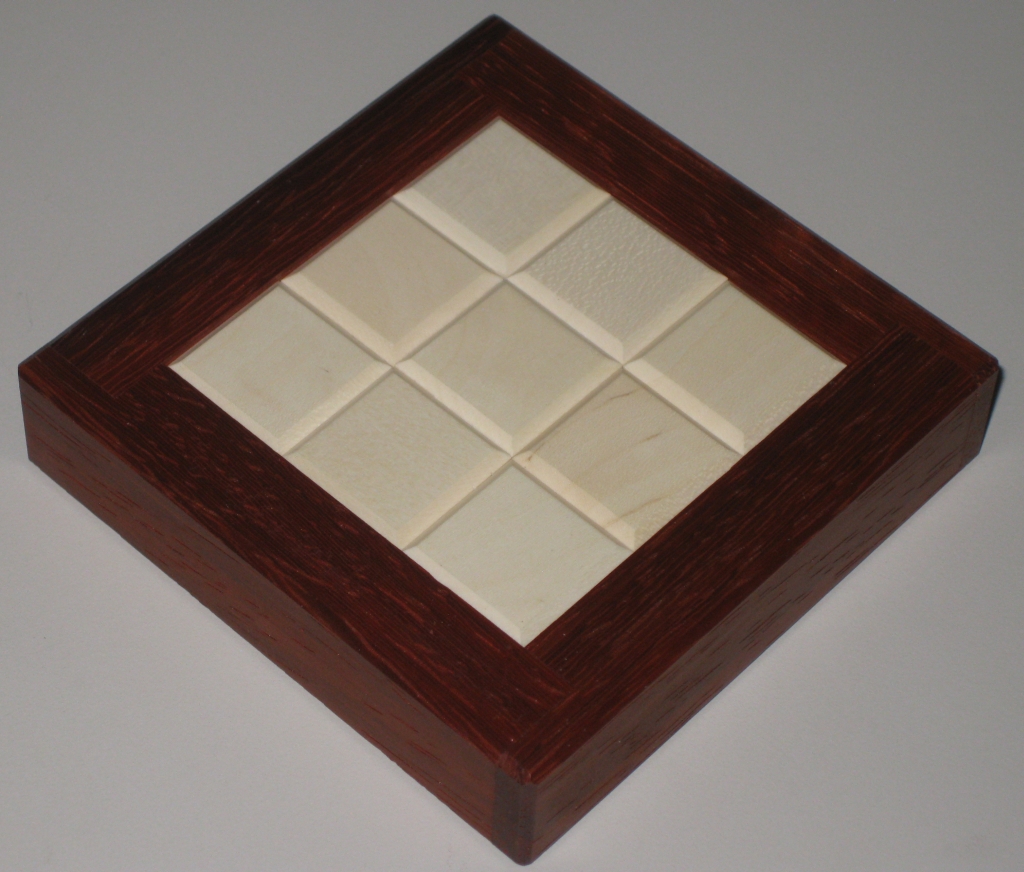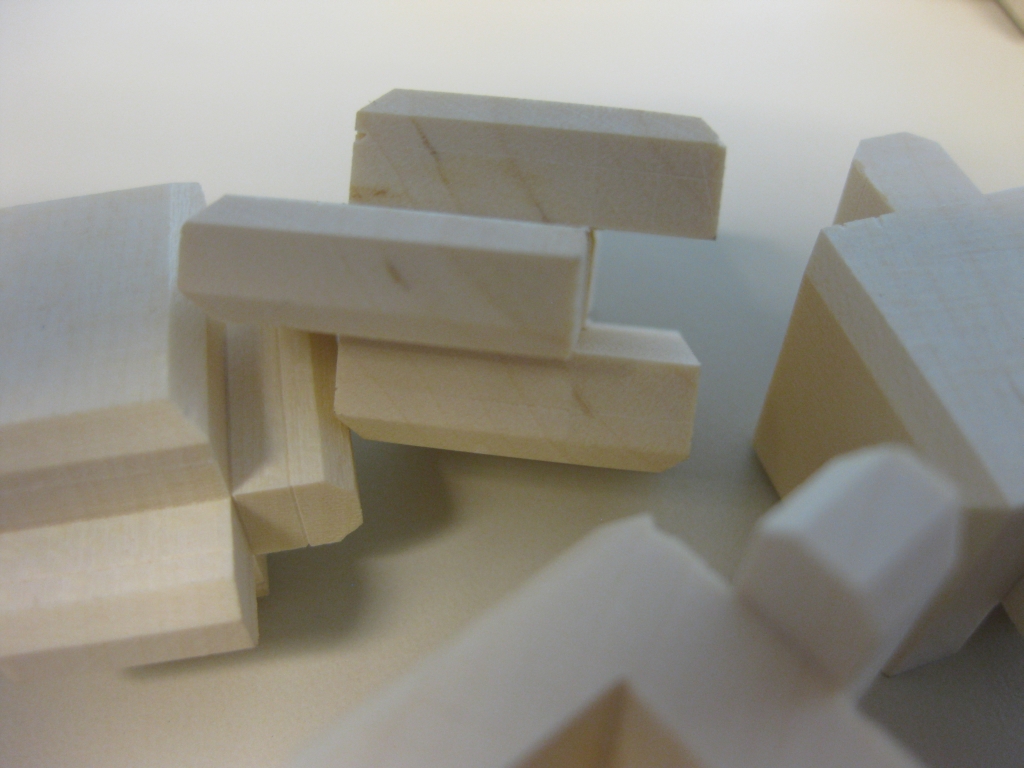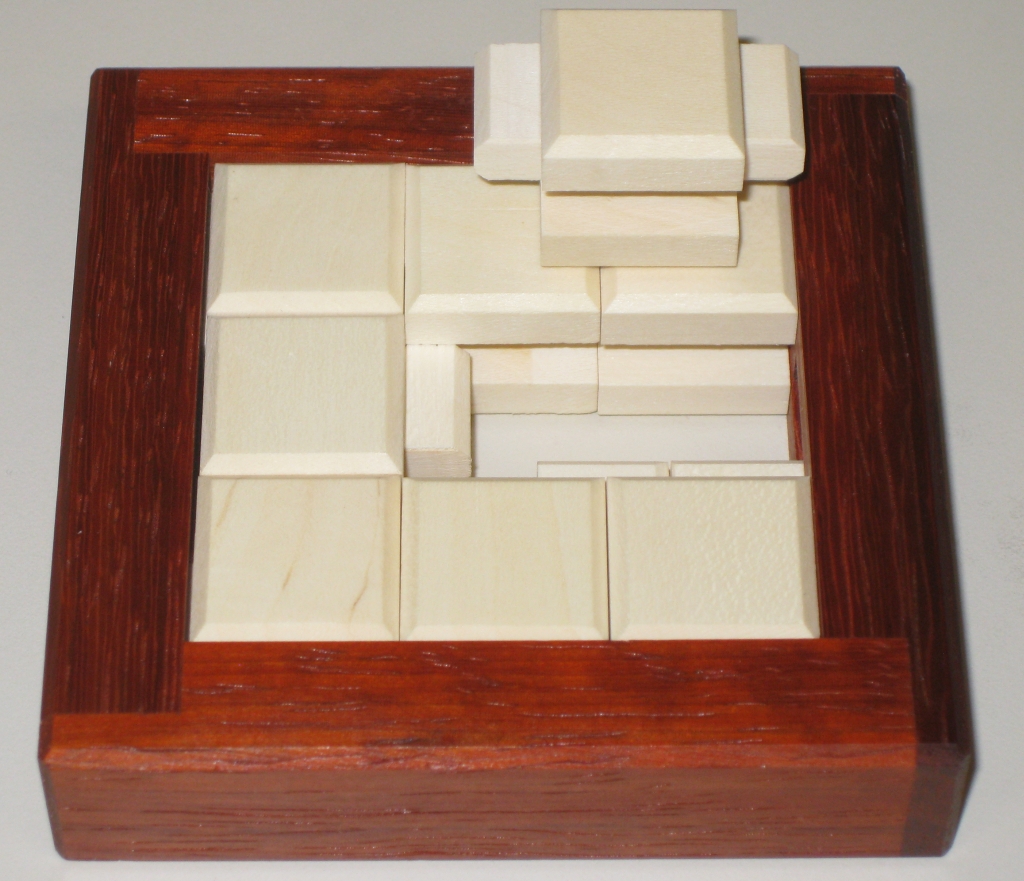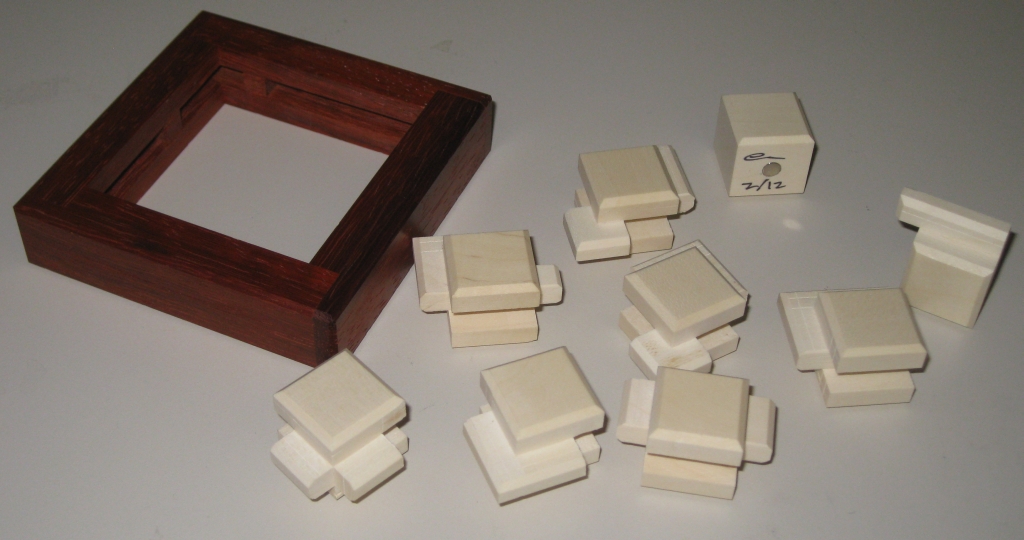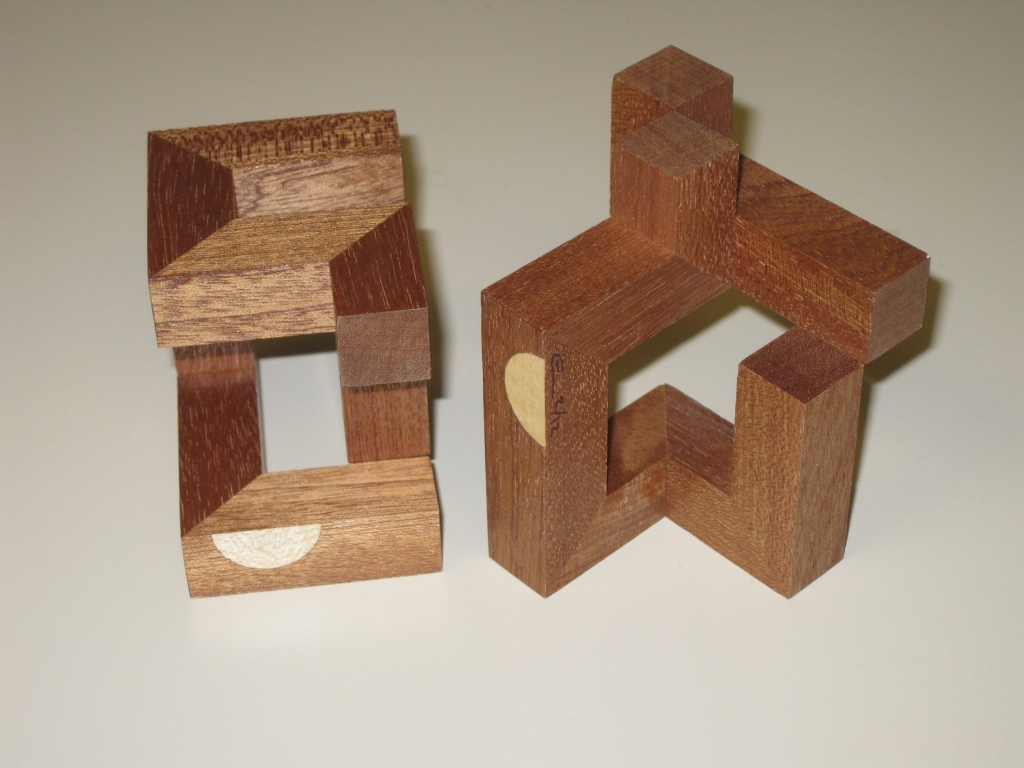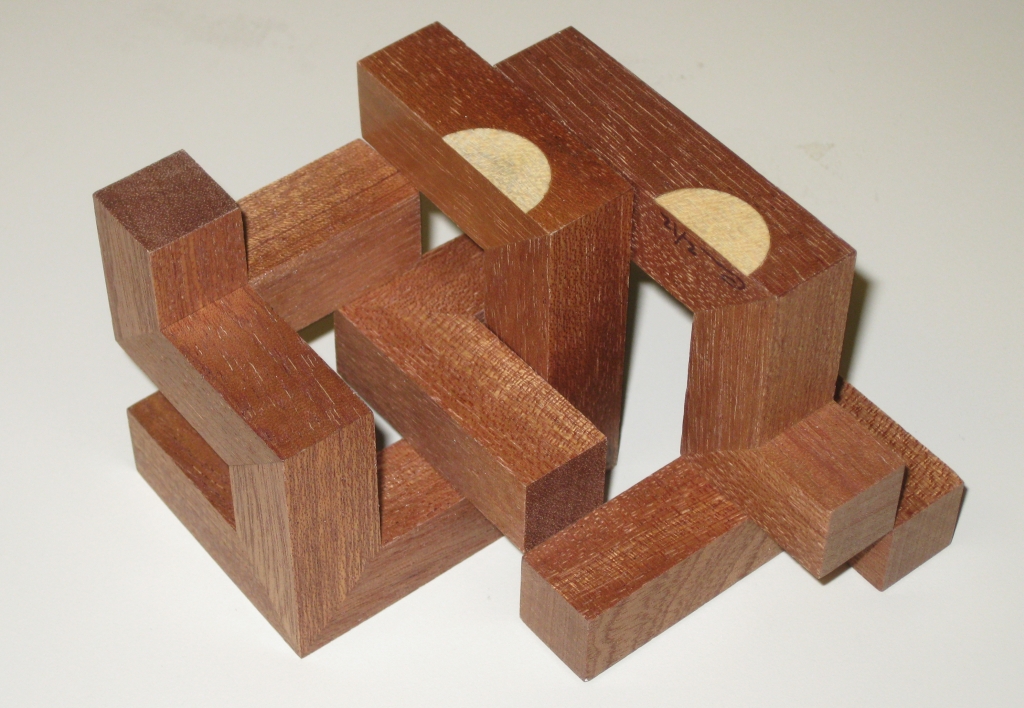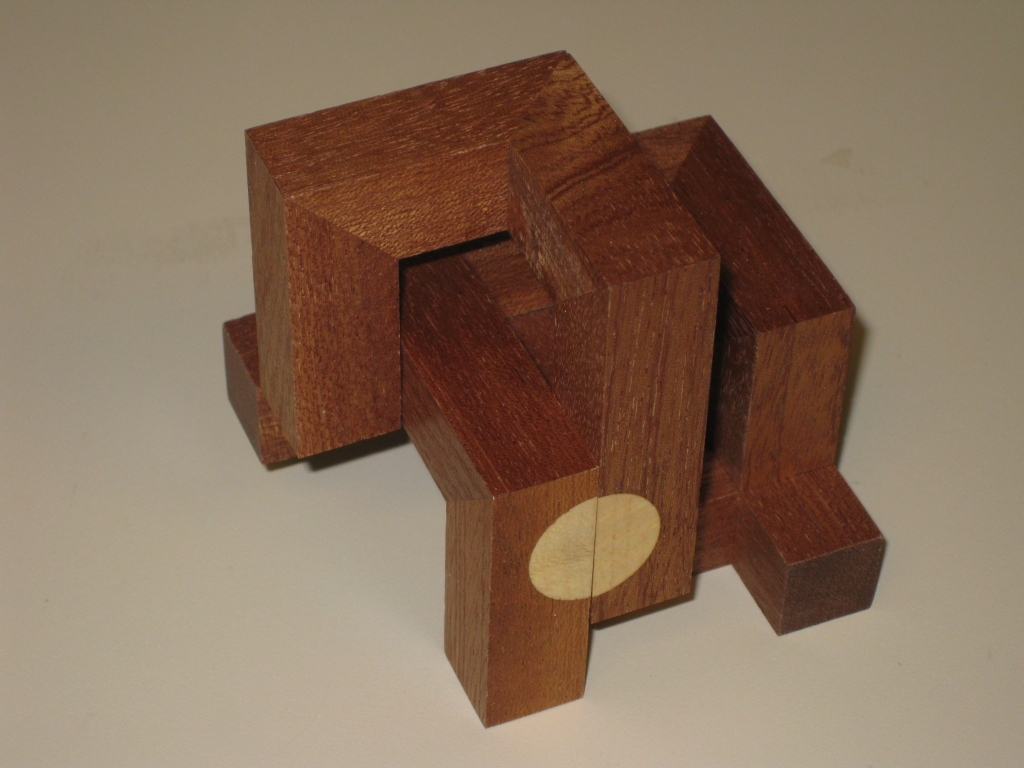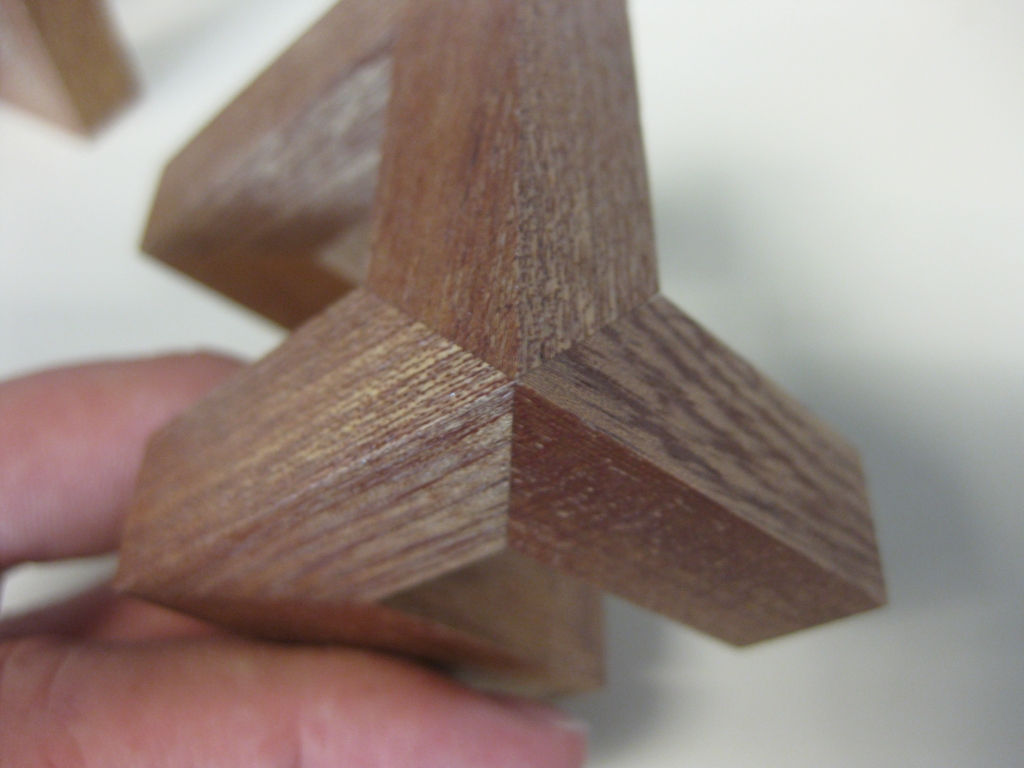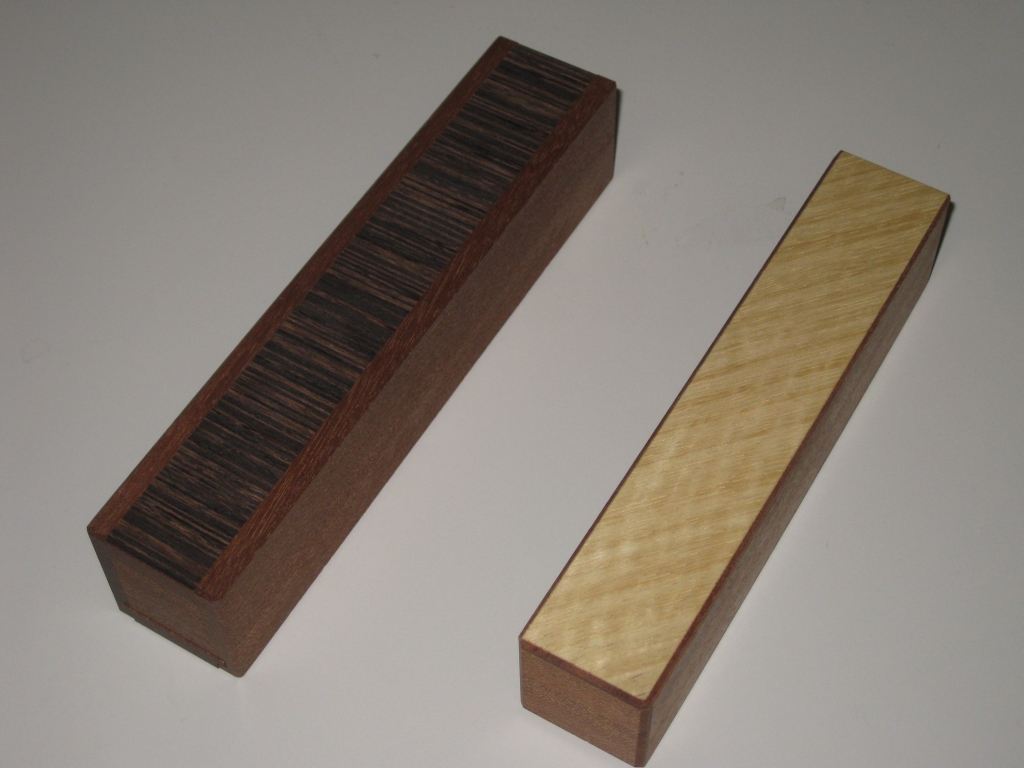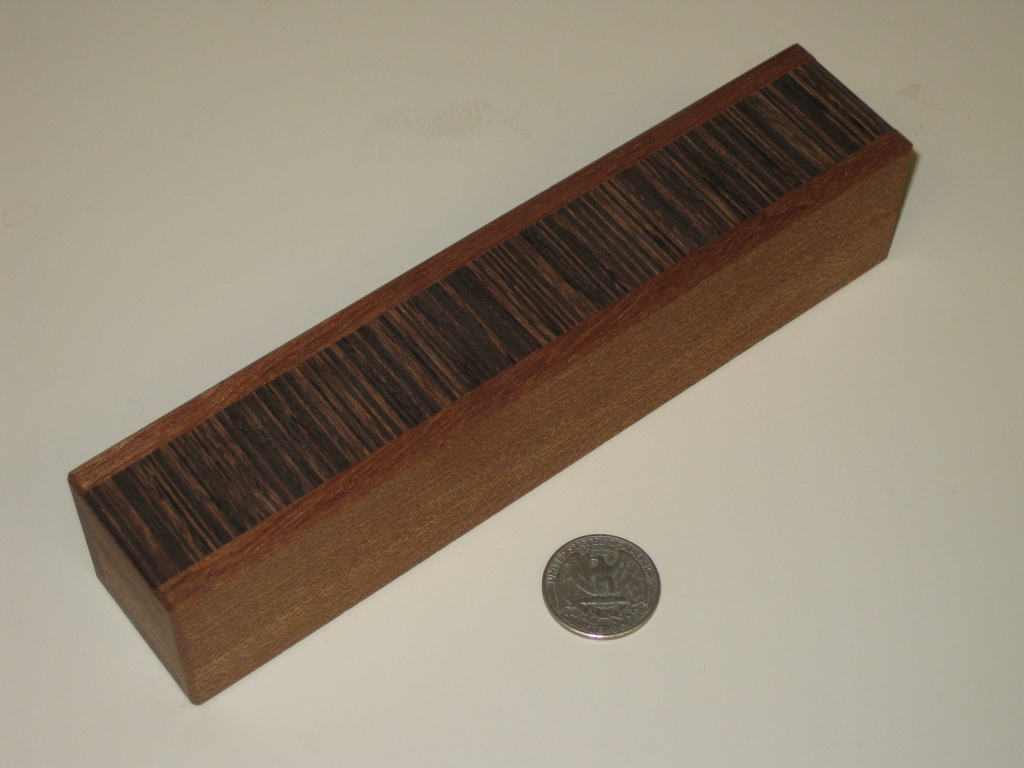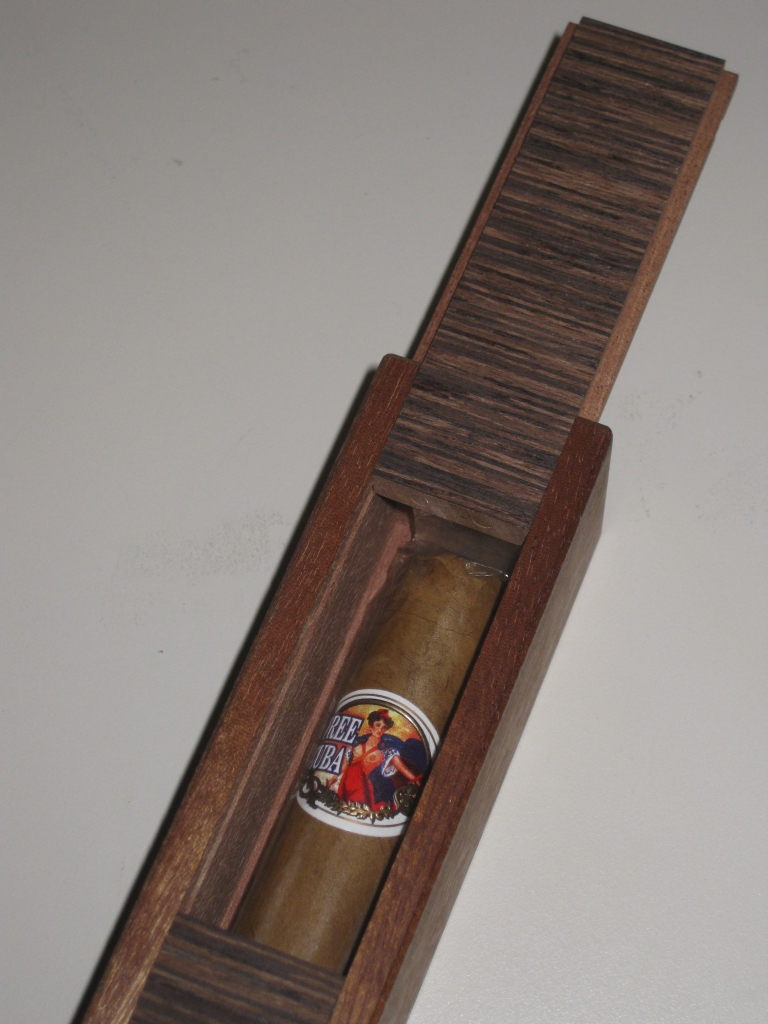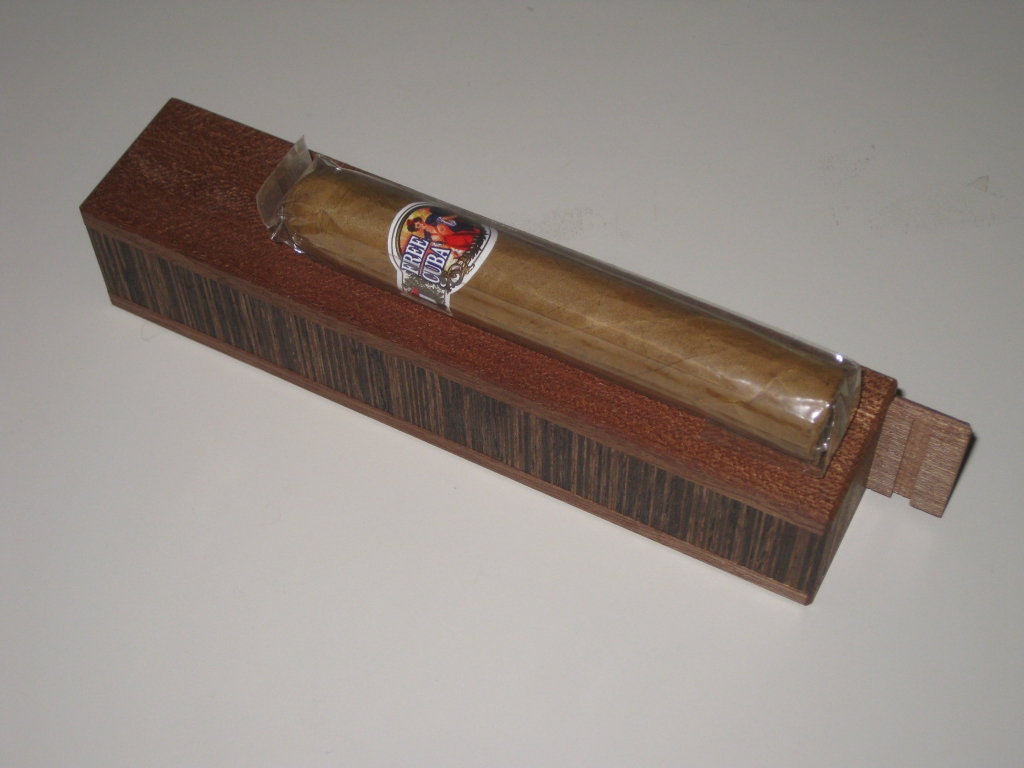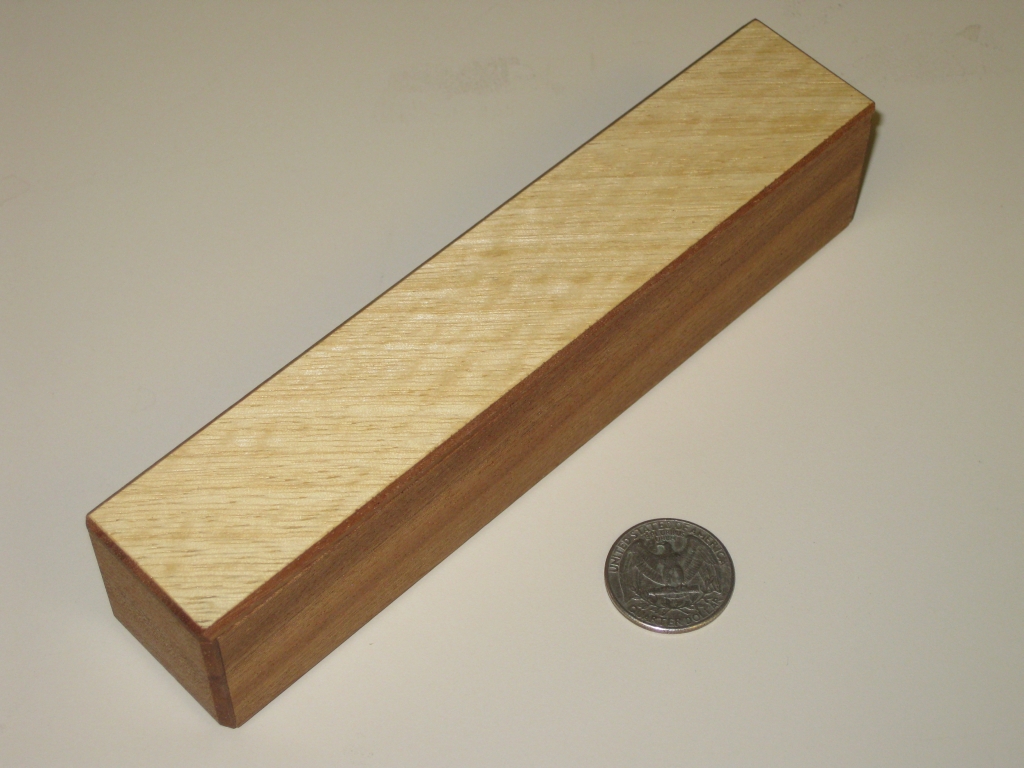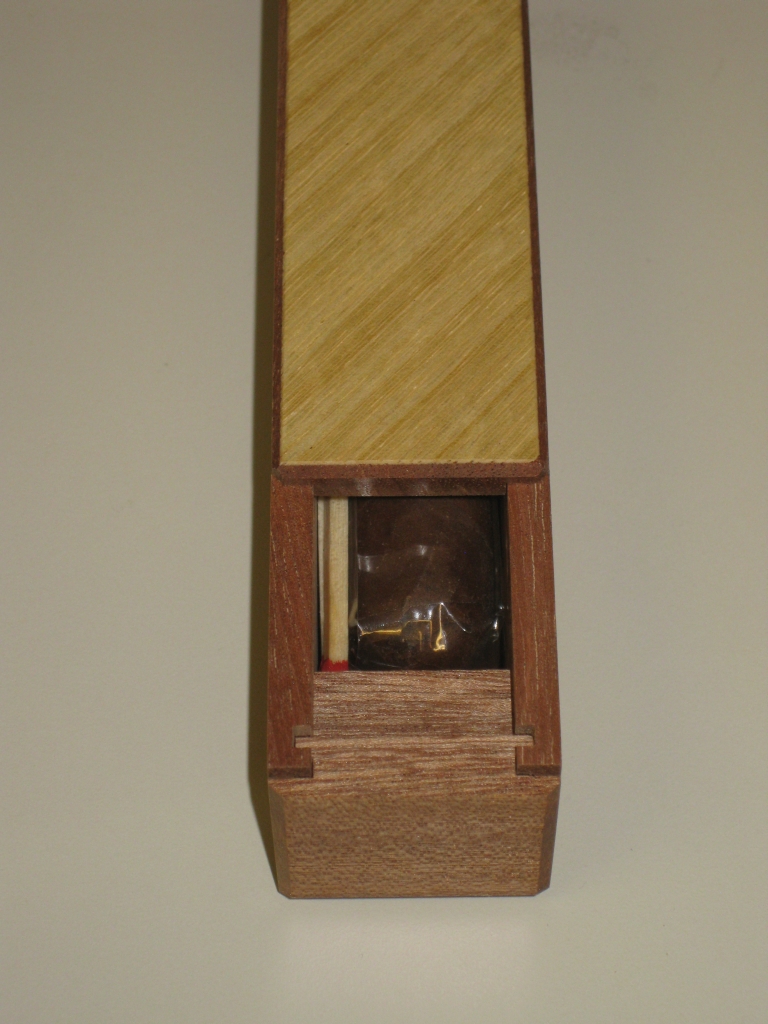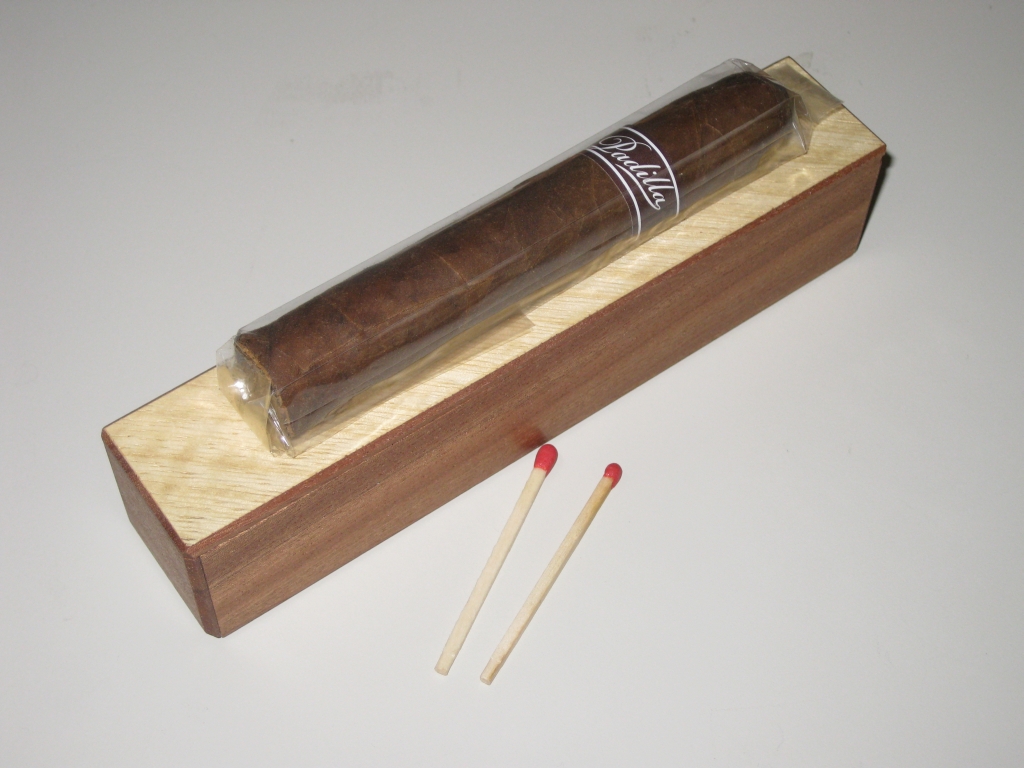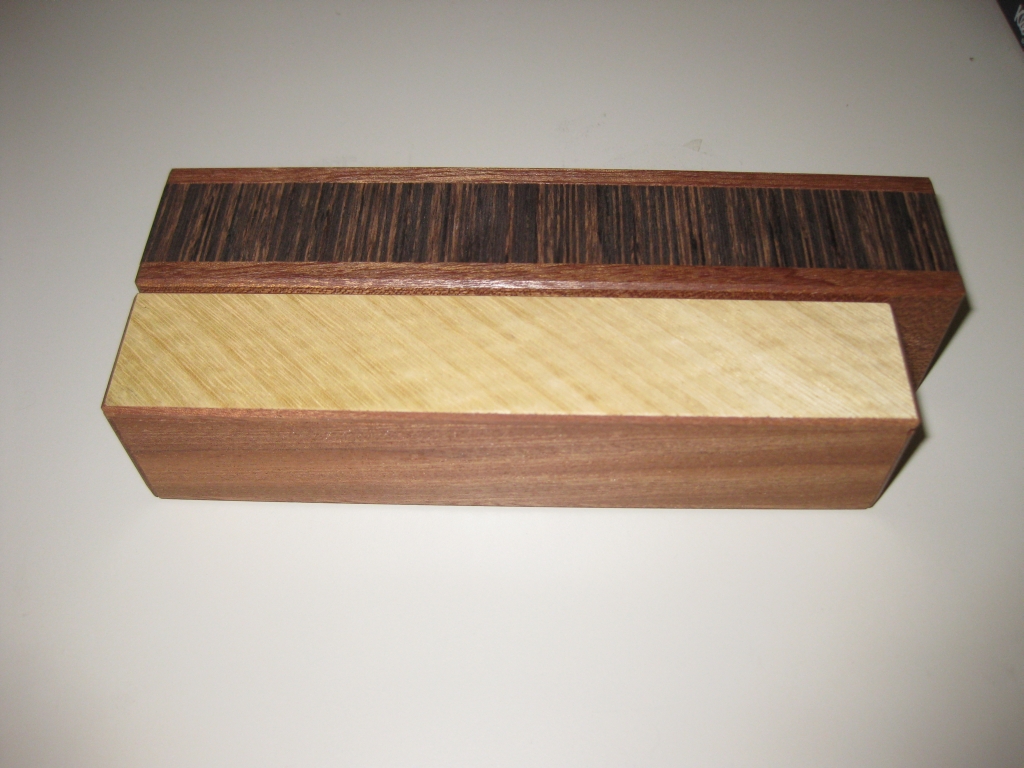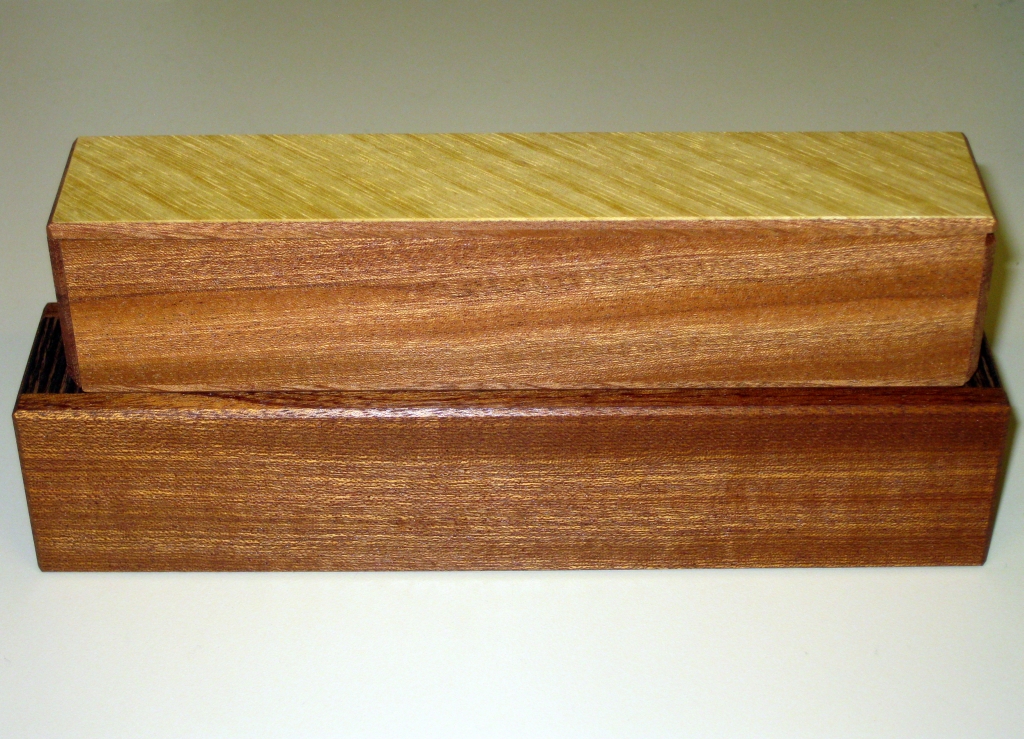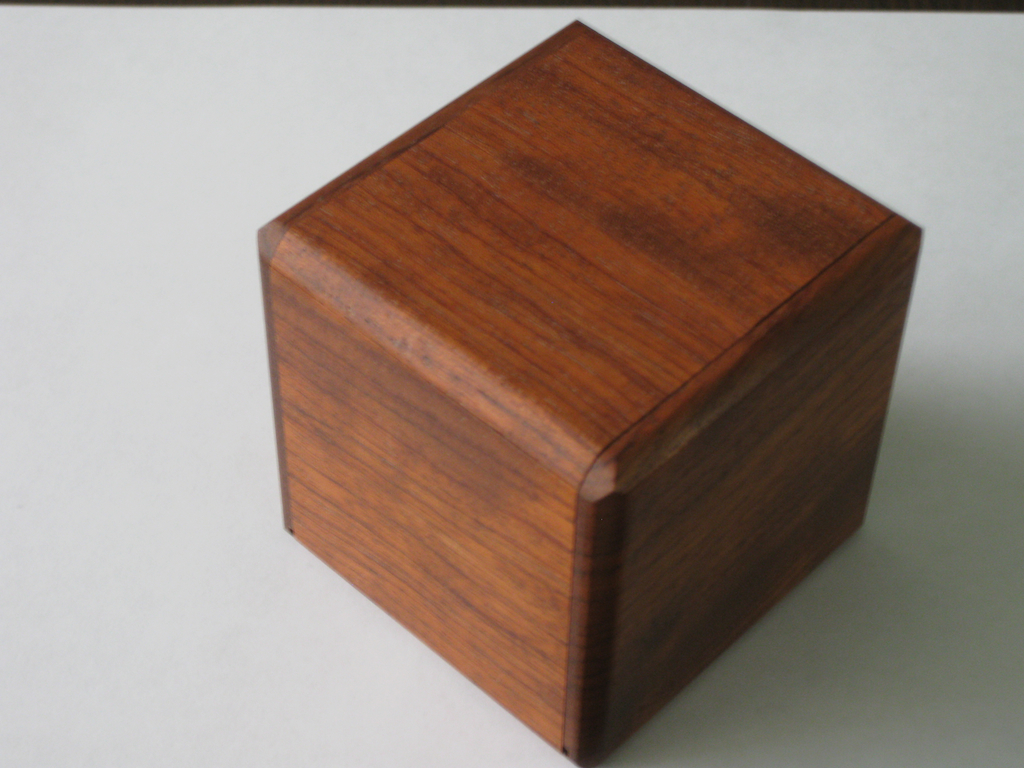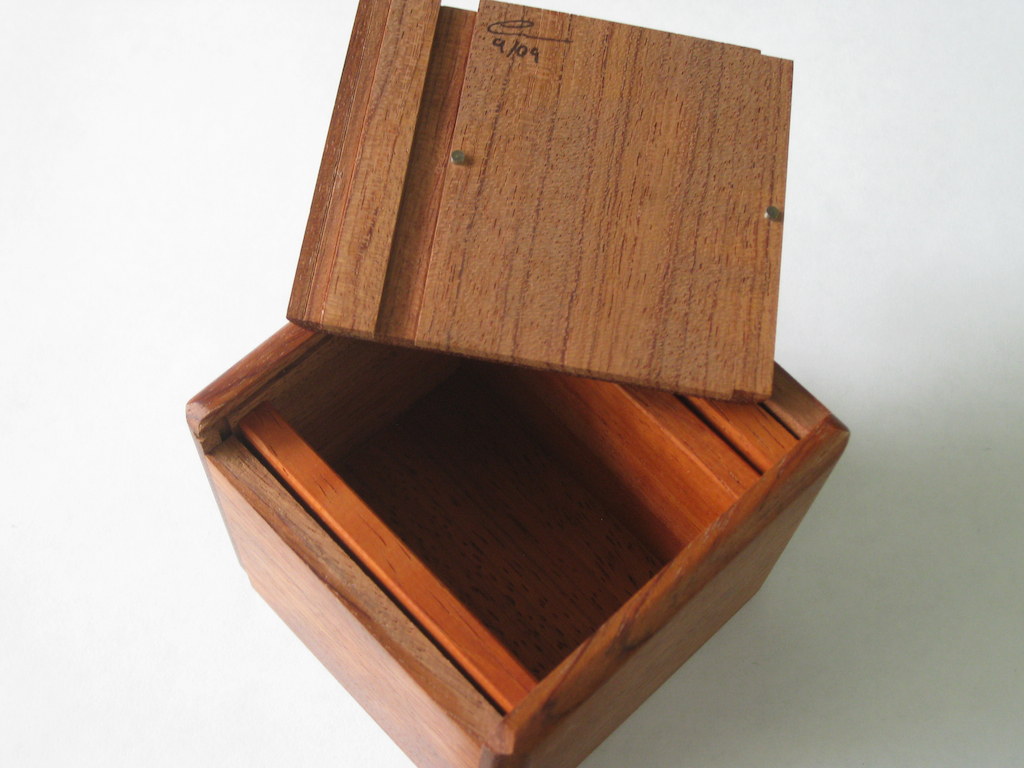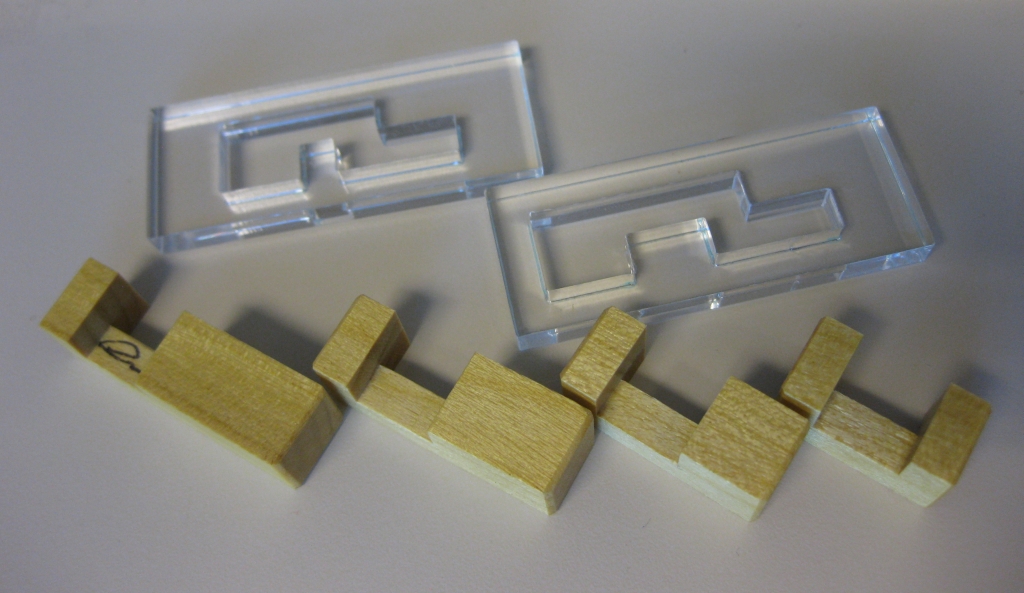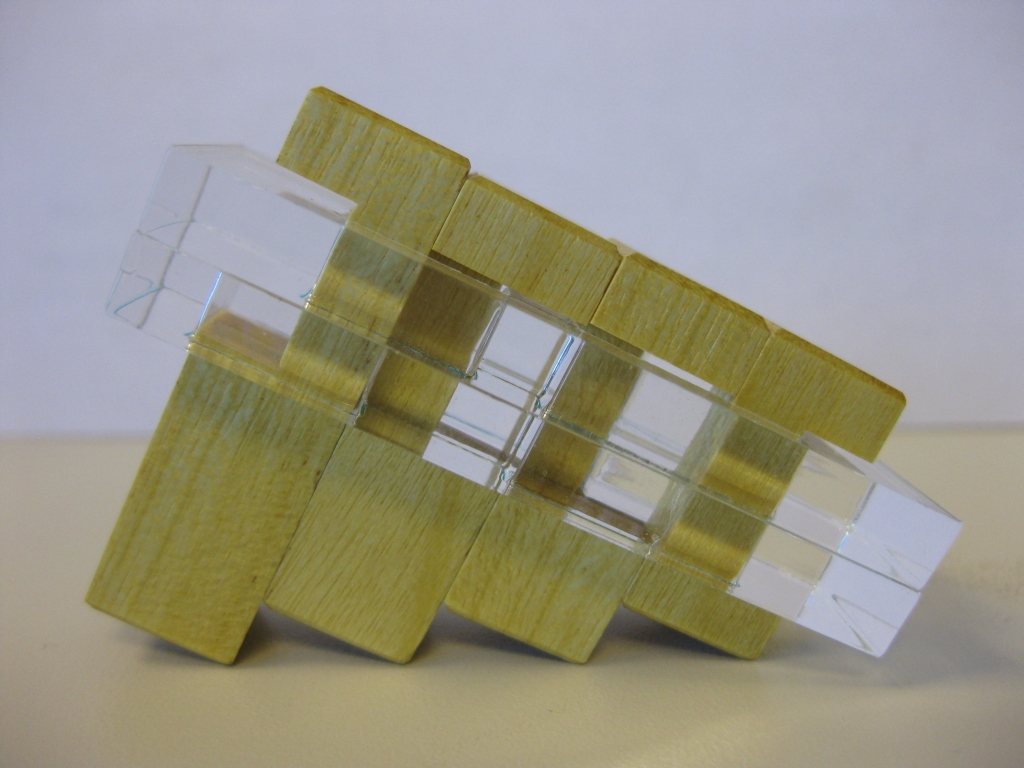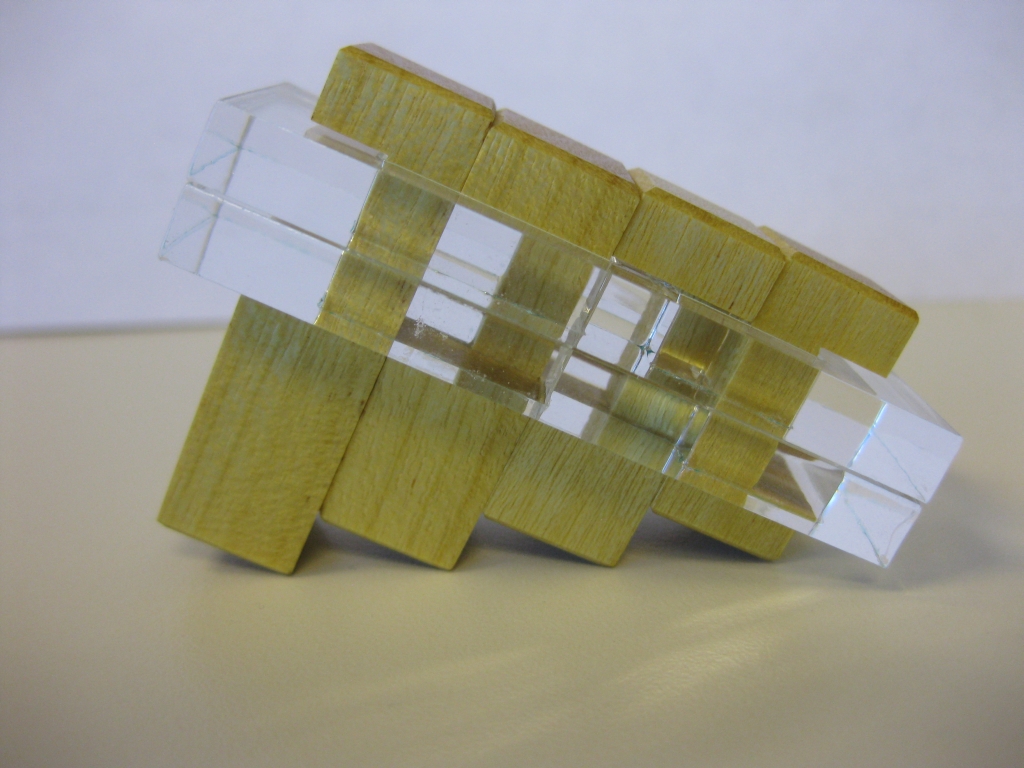It’s been a while since I’ve updated the blog, as I’ve been pretty busy with work, and with progress on a certain puzzle I’m making, but I thought this one was worth the wait. Before I say much more, I’ll give you two pictures. As ever, click them to see a larger version…
Yes, that table, measuring probably 16′ long is a lifetime of work from puzzle designer, builder and inspiration to many; Stewart Coffin. In a rare occurrence, Nick who graciously invited us to a puzzle party at his house, had the entire collection out and on display for cataloging. Not only that, but he was happy to let us play with the puzzles, and for others demonstrate some really unique movements to some plain looking puzzles. To see the collection through the pictures I took really doesn’t do it justice.
The video shows a scan of both sides of the table, and hopefully gives a better idea of what’s there. Obviously, the larger images below show the collection in more detail, but sometimes a video is more useful. Something incredibly interesting that a few of the people who were there commented on, including Scott Peterson, who is well known for some stunning Coffin reproductions was that the size of the puzzles gets smaller as the numbers get higher. Now this may fit with how many people thing about your skills as a wood worker progress over the years. Start big, get smaller as you go, but we came to a different conclusion. When Stewart started making puzzles, he was able to get his hands on lumber in much greater thicknesses than is readily available today. So as the years go on, and the lumber gets thinner, the size of the puzzle pieces you can make gets smaller. Maybe other people out there have thoughts, but that was ours!
The series of photos which follow, show the collection. Enjoy.
All I can really say personally is WOW. Thank you to Stewart Coffin for creating so many unique and beautiful puzzles for us to play with, and thanks to Nick for letting us see them!
Now that you’ve stopped drooling, the collection of Coffin’s was only one small part of the day.
There were many familiar faces present, including Bram Cohen, Alan Boardman, Abel Garcia, Scott Peterson, Derek Bosch, Marc Pawlinger, Stan Isaacs and a few faces I didn’t recognise. Nick’s wife was also there, and had laid on quite a spread of food including some excellent chilli to keep the puzzlers well fed throughout the afternoon.
As this was the first time I’d been to Nick’s house I had a good wander around to see what puzzling delights were on show. In the puzzle room there’s quite a few familiar puzzles on display. I recognised a couple of Kagen Schaefer’s boxes, as well as Berrocal’s and many of Eric Fuller’s puzzles, plus a pretty nice collection of Marcel Gillen’s work. I didn’t have time to play with many of the puzzles on the shelves, but I’ll come back to the Marcel Gillen puzzles…
While I was browsing the room, Nick announced that he was going to be doing a guided solve of the Host gift from IPP 17, made by Gary Foshee. Well I didn’t want to miss that, having seen the Trolly Car sitting on Nick’s dining room table when I walked in. It is a sequential discovery puzzle where each part of the puzzle opened reveals new tools, or parts of tools which must be combined in some clever ways to be able to get to the next part of the puzzle. The object is to remove the four passengers, whose names are inscribed in plaques at their feet. I’ll do a full review of that puzzle in part two of the writeup for the Puzzle party as I took pictures throughout the disassembly, but here’s a couple of quick pictures to let you see just how much is hidden in the puzzle.
After Nick had spent 20 minutes or so taking the puzzle apart, with suggestions from the collected audience, a few of us remained around the table for the assembly process to restore the puzzle to its start point, including myself, Abel and obviously Nick. As we talked the topic of the Revomaze puzzles came up and I mentioned that I’d solved all so far except the Gold, and we discussed my thoughts on the series and also Gold Specifically. Abel asked when I’d received mine as he didn’t have his and we talked a bit more as Nick struggled to remember exactly where each piece came from! After he was finished, he asked me to join him in the puzzle room, which of course I did.
There he picks up the small Marcel Gillen rolling pin puzzle and hands it to me asking “See what you make of that”. So I start playing and quickly find that there’s a maze in there, and the handle of the rolling pin is what is navigating the maze. Sound familiar? Anyway, after a couple of minutes, I find that there’s a sprung pin in there which rides on top of a maze, and gives a distinctive click when you fall off, forcing you to back track to the start and retry. The weight of this puzzle is significant, certainly more than that of a Revomaze Extreme. I quickly find that I can navigate the maze, and moving slowly I can feel the edges of the maze much like you can with practice on the Revomaze. Nick mentions that the larger, entirely aluminium rolling pin is even heavier when I point this out. So I must have a go of that too! The larger one took it’s toll on me. I ended up with my hands silver from all the aluminium dust having spent around half an hour working on it! I believe I made it around half way though the maze as I has able to get from the start to the other end of the pin consistently before falling off. Nick who’s opened the smaller puzzle from IPP13 but only made it half way in the larger says he thinks that’s around half way! For those who have solved a Revomaze, these puzzles significantly predate the revomaze, but lack the ‘quick reset to start’ found in the earlier Revo puzzles.
I did have a play with the much smaller, and lighter Eis Puzzle which I did solve. But I’ll be going back to complete these rolling pins as I’m pretty sure with a little more time I can crack both of them!
Also on that Gillen table was a fair collection of the Chess pieces, so I took the much better picture above since I had remembered my camera that day, unlike the last time at Stan’s
I also spent a while talking to Nick about the current Black Letter labs puzzle series as Nick and I are working together with a team of Renegades solving those. At this time, our team is #2 in the overall rankings with a combined solve time for the first 4 puzzles of 3 days, and it’s been a lot of fun (When we finished both artifacts 3 and 4 we were briefly in first place overall). I’ll write more about that in another post though.
I had a great day and it was good to see a lot of familiar faces. Come back in a few days when I’ll hopefully be able to post the rest of the writeup, including some items from Alan Boardman and his miniature puzzles, and the Trolly Car guided solution.
